160+ Ways to Describe Weather

I keep a collection of descriptions that have pulled me into the books I read. I’m fascinated how authors can–in just a few words–put me in the middle of their story and make me want to stay there. This one’s 160+ Ways to Describe Weather.
A note: These are for inspiration only . They can’t be copied because they’ve been pulled directly from an author’s copyrighted manuscript (intellectual property is immediately copyrighted when published).
- Evening shadows deepened into blue and purple.
- The shadows retreated.
- Sun was sinking toward the horizon, the pitiless white ball now an angry orange.
- Fading afternoon in early June
- Evening sky had turned to molten brass.
- Sun still cast a faint yellow light through Slowly gathering evening.
- Daylight had begun to drain away.
- one-quarter of a moonlit night
- silver-white moon hung
- A half-moon rests in the fronds over our heads.
- watching the horizon drain of color
- The shadows slipped up the rocks as though the world were drowning in darkness.
- deepening shadows made it a city of ghosts
- barely visible in the fading light
- the high heavens
- Darkness settled around him.
- The shadows slipped up the rocks.
- Evening was crisp already, the last of sunset just a fading pale stripe in the western sky.
- darkening river
- the moon golden at dawn, turn purple just before sunset in the rainy season, sometimes has white and black stripes created by volcanic ash, calm and clear sometimes attended by only a single cloud
- humpback shapes of conical hills
- The last rays of sun skimmed the surface.
- late afternoon sun
- velvety darkness
- night shattered like a mirror
- the Southern Cross lying on its side, the green meadow bathed in the humid light of the sinking sun
- The corners have just about disappeared into the shadows.
- black branches that traced the blue-black heavens overhead
- far away down the night sky
- full moon a pale blue-white disk
- night sky dull black
- Stars were remote pinpricks.
- a half-moon rests in the fronds over our heads
- inky blackness
- Thick clouds blotted out the stars.
- A thin layer of clouds masked the full moon, filling the room with blue light.
- Sun cast a luminescent glow.
- The day was out of sync with his mood.
- beautiful, 82 degrees, mild breeze, cloudless sunshine, a day for looking at a ball game
- The air was cool but the sun was out.
- The wind blew itself out overnight.
- a web of clouds, back-lit by the failing sun, mist billowed through the trees and over the fields and hung low in the air, masking the camp in a ghostly gray
- towering thunder clouds
- Clouds threatening, but no rain predicted the 45-mile per hour gusts of drizzly wind.
- brown cloud that passes for air
- a wedge of sunlight bursting past the narrow window
- The wind was icy and withering.
- Heads bowed against the gusting wind.
- Grit grated in his teeth. Dust was everywhere, blowing on the wind, leaving its scent in his nostrils.
- as dust motes drifted
- thirty miles over the horizon
- razor edge of the horizon
- cinder dust and gloom
- The haze floated over the crowd like smoke from a doused fire.
- Sun hanging in a pink haze of clouds and smog.
- Fog yellowed by agricultural burning.
- Fog began to billow across the road in a great grey mass like the effluent of a thousand smokestacks. The building was only a shadowy form, almost entirely lost to view.
- Headlamps of cars did little to pierce the gloom.
- The mist floated like smoke out of the cypress in the swamp.
- dark clouds drifting over the hills
- night was pitch
- slice of sky
- thick clouds blotted out the stars
- a thin layer of clouds masked the full moon, filling the room with blue light
- cool restful shady world with light filtering lazily through the treetops that meet high overhead and shut out the direct sunlight
- saw the anvil of cloud coming in. “A thunderstorm.”
- Cumulus clouds falling down to the…
- A light breeze whispered through the trees.
- cloud shadows
- first cumulus clouds darkening into thunderheads
- hold humidity like a sponge holds water
- thick heat of the growing morning
- fierce humidity
- windless heat
- It was surprisingly hot. He could feel the sweat roll down his sides and the dampness of the box up against his chest.
- Even with the breeze, the air remained thick and hot, and it stills tank of petroleum.
- sky as gray-white and sunless
- against the fading layers of orange, yellow
- shoulders hunched against the early morning damp and cool
- fused warm light of dawn now creeping down the summit
- bathed in sunlight
- gold shadow not three inches from his leg
- his breath steaming in the air
- Snow pelted his face and he pulled up the collar of his overcoat to further shield him from the bitter weather.
- rubbed his arms
- A harsh winter wind blew out of a midnight sky. It roared out of the frigid north and thrashed the brooking forest. The force of it bent trees, whipping their bare branches like angry lashes. Shrieking across the river.
- Cold was like that, seeping through her seven layers of clothing, attacking seams and zipper tracks and spots of thin insulation. The exposed skin on her face felt as if it had been touched with lit cigarettes.
- frigid Friday morning
- swirling snow
- winter’s naked branches created a black tracework
- The sun was climbing out of the deep well of winter, but it was still brutally cold.
- winter colors daubed the land in colors of brown and gray
- sunny, crisp and cool
- The crisp air and clear sky energized his thoughts.
Rainy weather
- grey wet morning
- rain-swept and unpleasantly chilly
- A flurry of rain stung my face.
- Cold rain was beating down on my windshield.
- The sky was leaden.
- Downpour started in the early evening and continued on through the night, a heavy pelting of water that thundered against rooftops and drowned out the sound of all else. By morning, city streets were shallow rivers rushing toward the ocean.
- Rain ran down the window, the streets gleamed.
- damp paving stones
- By the time it reaches the ground, it has spent its energy.
- windshield wipers barely keeping up with the cold, hard rain
- The rain came steady and cold against the windshield and rattled on the roof of the car.
- turned her head away and looked out my window, where it had gotten dark and shiny with the lights glistening off the rain.
- The maple trees were black and slick in the rain, their bare branches shiny. The flower bed was a soggy matting of dead stems.
- The sky was low and gray.
- Air was swollen.
- the rain was steady and warm and vertical
- drizzly rain
- The sleety rain drizzled down, not very hard and not very fast, but steady.
- Rain came down so hard it almost hurt, stinging the skin and blowing into the eyes and nose and mouth, but in the forest its fall is broken by the trees.
- saw a distant flash of lightning, counted the seconds, and then said, “six miles, more or less.”
People in hot weather:
- Heat wave hit, temperatures went soaring.
- The heat hit them like a hand in the face.
- strode into the dusk, into the stifling heat
- The heat smacked the grin off his face.
- Burst back into the blistering hot sun. Sweat immediately beaded across her brow. She could feel her T-shirt glue itself stickily to her skin.
- I could feel the sweat form along my backbone and trickle down.
- She slogged forward, feeling blotches of dark gray sweat bloom across the front of her T-shirt, while more trailed down the small of her back.
- slogging across pavement as hot as ash in August.
- white dress shirt, sharply pressed this morning, was now plastered against his chest
- already short of breath, his lungs laboring as they headed down the path
- still wrung out from working in the heat
- Take your shirt off. Pop your underwear in the freezer. Dump a tray of ice cubes on your bed. Throw back some chilled vodka shots before you go to sleep.
- The semi-drought slowly draining the life out of the grass and trees.
- Only 7 in the morning, and already stocky hot. *** had a sheen across his forehead.
- Sweat tricked from his forehead which he wiped with the back of his knotted, callused hand.
- hundred degree heat, burning sun and parching salt
- ninety-five outside, probably a hundred in the car. Not great weather for polyester suits
- a fresh drop of sweat teared up on her brow and made a slow, wet path down the plane of her cheek
- walking through a hair dryer
- The heat slammed her like a blow.
- *** cranked the air-conditioning. She stripped off her sweat-soaked clothes, climbed into the shower and scrubbed.
- answered the phone while used the other hand to wipe the sweat from the back of her neck. God this heat was unbearable. The humidity level had picked up on Sunday and hadn’t done a thing to improve since.
- *** thin green sundress was already plastered to her body while she could feel fresh dewdrops of moisture trickle stickily down between her breast.
- Cradled the phone closer to her damp ear
- Her face shiny with sweat.
- Summer sun remained a brilliant, blinding white. No shade existed for miles and the heat rising up from the baked earth was brutal.
- The summer heat came off the tarmac in waves.
Hot Weather
- While the mercury climbed to a hundred degrees. Efforts started strong, then petered out. People got hot, got tired, got busy with other things—inside things.
- Seemed to be bracing himself for leaving the cool comfort of air-conditioning behind and bursting once more into the heat
- The heat settled in on them, rolling in like a heavy blanket and pressing them deep into their chairs while their clothing glued to their skin.
- Even my teeth are sweating
- The sun beat down relentlessly; even with the AC cranked up, she could feel the heat.
- She could already feel sweat trickle down her back.
- The sun burned white-hot overhead.
- glass exploding from the heat of the sun
- vanish in the dry season’s brown leaves
Click for the complete list of 69 writer’s themed descriptions .
Copyright ©2022 worddreams.wordpress.com – All rights reserved.

Popular collections:
15 Ways to Describe Birds
How to Characterize Love in Your Writing
45 Transitions That Help Your Story Flow
Jacqui Murray is the author of the popular Man vs. Nature saga, the Rowe-Delamagente thrillers , and the acclaimed Building a Midshipman , the story of her daughter’s journey from high school to United States Naval Academy . She is also the author/editor of over a hundred books on integrating tech into education, adjunct professor of technology in education, blog webmaster, an Amazon Vine Voice , and a freelance journalist on tech ed topics. Look for her next prehistoric fiction, Savage Land Winter 2024
Share this:
- Click to share on Facebook (Opens in new window)
- Click to share on LinkedIn (Opens in new window)
- Click to share on Twitter (Opens in new window)
- Click to share on Pinterest (Opens in new window)
- Click to share on Tumblr (Opens in new window)
- Click to email a link to a friend (Opens in new window)
- Click to print (Opens in new window)
- Click to share on Reddit (Opens in new window)
126 thoughts on “ 160+ Ways to Describe Weather ”
Nature and weather books often feature interactive elements such as questions, quizzes, or activities that encourage children to think critically and apply what they’ve learned.
It is really helpful
Thank you so much 🙏🙏🙏
Like Liked by 1 person
My pleasure, Luisa. Thank you for stopping by.
Pingback: Top 10 Posts, Most Commented, Tips, and Share Platforms for 2023 |
Pingback: Top 10 Posts, Most Commented, and Tips for 2022 |
Pingback: How’s The Weather In Your Story? – Writer's Treasure Chest
Weaving words so perfectly – Thanks for sharing. And overnight, a transformation. Summer at last.,, .
These really inspire me. I often read through my collections when I’m stuck.
helped my writing
Pingback: Top 10 Posts — and Most Commented — for 2021 |
Reblogged this on Coffee82 and commented: Awesome.
Like Liked by 2 people
Nice collection! A lot of poetic and inventive phrasing there.
✨🙏🕉🌱🌿🌳🌻💚🕊☯🐉✨
Weather is so many different things to different people. Not surprising I found 160 descriptions of it.
Ha! yes – that got me thinking about the old “Number of words for snow” question, and I found this . As a Scot myself though I have to say I am very, very skeptical of the final claim in that article!
I’ve heard of that, too. Luckily, my folks don’t have that problem but it is truly an issue if you’re writing about present-day groups in snowy lands.
Appreciate your list of ways to describe the weather. Timeless too. Here I am 2 years since your post and inspired by your creativity. Take care, Steve
It is timeless, isn’t it! When I put this list together, it helped me to better appreciate weather.
Impressive list. (Mine, now!) I’m compiling one for similes. Raymond Chandler makes me smile with his off the wall analogies. I recently added a Writing Terms Checklist on my free checklists page. It was too long for a post. Thanks for all you do!
I like checklists. I’ll check yours out!
Hi Jacqui, Thanks for reading my modest post. What an accomplished woman you are! What would we do without words, eh! Cheers. Joy x
Thanks, Joy. I enjoyed your thoughts. It’s amazing what inspired such accomplished writers as the Brontes.
Excellent list, Jacqui. I even get lots of ideas for titles, something I’m always struggling with entering competitions.
I grab these from books I read. You can probably tell I favor thrillers, action. I like ‘weather’ and ‘setting’ to be a character as much as the others.
That’s an amazing compilation. Thanks for sharing!!
Thanks! These sorts of lists inspire me.
An awesome post, Jacqui. Thank you. Weather intrigues. It is joy-filled and sometimes furious. God is bowling upstairs during a thunderstorm. Be well and enjoy the week. ox
Thanks–weather is fascinating. I like when I can feel it through an author’s words.
Indeed and thank you, Jacqui. Word play is an enjoyable activity. We have about seven months of winter, two days of spring and then summer at our end of the pond in Upstate New York. I love my four seasons. Be well.
7 months of winter. I didn’t know NY was that cold! Good to know so I never move there!
Jacqui, I laughed at your comment. We live near Lake Ontario and Oneida Lake and get frequent lake effect snow storms in winter. When I first moved to this area, I learned about lake effect snowstorms. We have excellent snow removal though so come on over sometime. Colorful in Autumn too.
Pingback: Episode 129: A Dark and Stormy Night – #WriteOnSC Radio Show and Craft School
These are great, Jacqui! And yes, inspirational. It’s good to see how other authors describe things; it gives ideas on alternates.
It is. There are some very clever minds out there.
What an epic list 😀 Reminds me of a ‘music’ video we were recommended to watch for university called ’50 words for snow.’ It’s fun to think of different ways to describe things!
That must be put out by Eskimos. They know more about snow than anyone I’ve seen.
That’s a long list, Jacqui. So many ways to tell the day. Thanks for sharing this!
It’s one of my longest! Who knew?
That’s a lot of ideas for talking about the weather 🙂
Dinner party chat.
Quite eloquent 🙂
These lists are so inspirational! Thank you for posting this.
It is pretty interesting to view weather through so many literary eyes, innit?
Yes, indeed. I learn so much. 🙂
great list Jacqui. i use the weather regularly in my stories to create a specific mood. thanks for the info.
A bit of unexpected inspiration. Who knew weather was so interesting?
exactly, Jacqui. i also post weather images regularly on instagram. especially the colours of sunrises and sunsets in clouds during different seasons and different weather conditions.
Interesting post, Jacqui. Thanks.
I highlight memorable phrases in the Kindle books I read. Although I no longer transcribe them into a file on my computer (too time-consuming), the mere act of highlighting imprints the phrases in my mind. If an author particularly impresses me, I can scroll through the highlights and reread the highlights for inspiration.
That’s how I do it, too. I like it so well, I’ve migrated from being a print book reader to a Kindle reader.
It’s nice to see the wide variety of language. Not that it is needy. I can describe the weather currently in my area in one word — sucky! 😀
Ah South Korea. It rained most of the time on my one visit there. And no one but me seemed to care!
We’re having a monsoon right now. Don’t remember having a good one of these for a while.
I remember my son telling me July was the typhoon season, which is why we visited in May. Stay safe!
Nothing that crazy. We had a tropical depression pass through, but that’s it. It’s just wet.
I love the idea of keeping a notebook with descriptions that catch your attention. I’m going to start doing this.
Mine is so long,d I added a table of contents with links to the sections! I’m a bit nuts about it.
Pingback: Author Inspiration and This Week’s Writing Links – Staci Troilo
I love the way you compile and share these lists with us, Jacqui. They are amazing and so helpful. Can I confess something? I share some of them with my creative writing students, and then give them prompts where they have to include 3 or more things from your lists. Will be interesting to see how I do that with weather. 🙂
This one got a little long. Who knew there were so many clever ways to describe weather?
I am flattered you share them! I would say weather could surprise them.
This one IS long – but weather gives us a lot to talk about and a lot to experience. I love the list. I will say, the prompt my students seem to love the best is. (are you sitting down?) “It was a dark and stormy night…” 🙂
Reblogged this on Marina Costa and commented: Interesting and useful to know.
Thanks for sharing, Marina!
The English should love this…
I would say India not so much. Do you-all get anything other than hot and humid or too-darn-windy?
What a helpful post, Jacqui! It reminds me of how we can put effort into our descriptions.
BTW, you won a book on my blog. Please confirm there.
Ooh, sorry I missed that. I just went over and replied and then emailed my info to you. How exciting!
Reblogged this on quirkywritingcorner and commented: I love her lists of descriptions. I hope you find them as helpful as I do.
Thanks for sharing this! It puts to bed any thought that weather is boring, doesn’t it?
That’s quite a collection, Jacqui. Isn’t it amazing that each of us can conjure something unique?
It is! Next time you don’t know what to say to someone, you can eruditely talk about the weather!
That’s so funny. Weather ‘small’ talk. Who would’ve thought. 😂
Great post. That’s a wonderful collection
Thank you so much, Luisa. It’s hard to make weather interesting but some very clever authors have done just that.
Jacqui, I love this post. The more I have been reading, the more I recognize how important it is for authors to paint a picture in your mind. To be able to put you right in the middle of the books setting. Sometimes when my mind has trailed off the story, it is descriptions like these that put my mind right back in.
That’s true, innit. A little inspiration to start your day.
I love your descriptions of weather and the times of day. Such descriptions can help add a sense of time in a story (just as the phases of the moon or the stars can create time (crescent moon in evening is aa new waxing moon, crescent moon in morning before sunrise is a waxing moon just before the “dark of the moon” which are the three days the moon is in the shadow of the earth. As for stars: Orion in winter, Scorpus in summer, etc). The dog star in Canis Major, Sirius, the brightest star in the sky, rising in late summer (as it rises just before daylight) is linked to “dog days” of summer…
I also like the old graveside prayer that describes the end of life: “until the shadows lengthen and the busy world is hushed, and the fever of life is over, then in thy mercy grant us a safe lodging and a holy rest and peace at last.”
What a wonderful poem. I’ve copied it. It captures so much of the fear and hope.
Thanks for these awesome examples, Jacqui! Saving and sharing…
It’s always fun to talk about the weather, innit?
New Jersey weather: moist ‘n’ icky.
Good description, especially the ‘icky’.
I calls ‘em like I sees ‘em.
Oh my, Jacqui. I love your lists and that’s a good long one. Great thought starters. Thanks for sharing your collection!
Since we-all know we must cover weather, I thought these were clever asnd interesting ways to do that!
Ha ha ha. I love weather. 😀
Right now there is only one way to describe the weather here in my city: hot
Here, too, though I have an excellent fan in my home office.
Some great phrases here, Jacqui. I am reading The Long Walk by Bachman/King at the moment and that has some very descriptive phrases in it.
Oooh, I’ll have to look at him. I love nature writers.
It’s not a nature book, it is a dark psychological horror.
Woah! OK, that’s different!
Darn! All the things I was about to write! 😀
Hehee. These are beyond most of what I write but I’ve seen what you turn out. Excellent.
Wonderful post!
Thanks, Ed. Food for thought…
A lot, just wonderful and so helpful.
My goodness …. can I just say ‘HOT’ … luckily today it’s cooler with a sea breeze … I need to read them all – clever and thank you! Cheers Hilary
Hot works. Absolutely.
Hahaha can I just say HOT, or the weather outside is weather yeah?
What a wonderful list, Jacqui! These are descriptions that always make me pause and reread them to fully enjoy them. They do draw the reader deep the story. I enjoyed reading these, thanks:)
Thanks! They do that for me, too, and that’s why I couldn’t just read and move on. I had to note them!
Some of these are quite lovely. Thanks for sharing.
If you recognized them from your outdoors scenes, feel free to add a note!
I actually didn’t recognize any of them. 🤔
OMG, Jacqui. What an amazing list Thanks for sharing.
It’s really nice for those whose plots take place outdoors a lot!
BTW, finished your book. Couldn’t stop reading. Wonderful.
Thank you, Jacqui. You put a smile on my face:)
Wow, great post. Bookmarking.
Amazing how much there is to say about the weather, innit?
I love weather, the seasons, earth and sky. There were some lovely gems in this collection. Thanks for sharing.
Thanks, Mae. I didn’t used to think much about the weather until I had to write about it, and make it interesting! These really struck me.
A terrific resource Jacqui. Thank you.
Thanks so much, Brigid. I couldn’t believe how many weather descriptors I had!
Nice information thanks
Thanks! Everyone writes about weather, right?
Great list, Jacqui. Thanks so much for sharing.
Thanks, Jill. Who says weather isn’t interesting? Hmm??
I think I’d like to be a meteorologist in my next life. 🙂
Reblogged this on chrismakan .
Thanks for sharing!
Wow this is very educative
I love how some writers weave their words so perfectly.
What do you think? Leave a comment and I'll reply. Cancel reply
This site uses Akismet to reduce spam. Learn how your comment data is processed .
- Already have a WordPress.com account? Log in now.
- Subscribe Subscribed
- Copy shortlink
- Report this content
- View post in Reader
- Manage subscriptions
- Collapse this bar
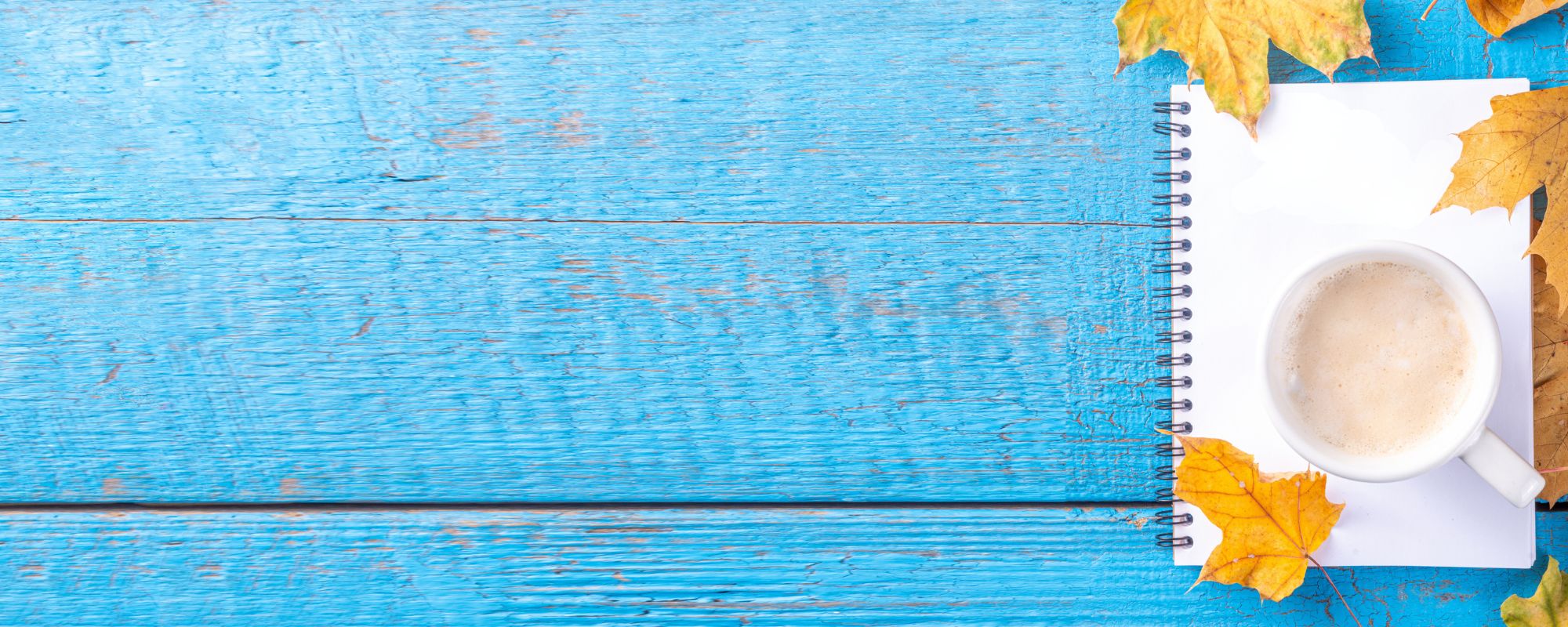
BRYN DONOVAN
tell your stories, love your life
- Writing Inspiration
- Semi-Charmed Life
- Reading & Research
- Works In Progress.
Master List for Describing Weather
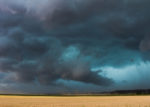
A lot of writers struggle with describing settings. I’ve written before about how to describe settings and why it matters , but a few people have told me they’d like me to do some of my master lists for writers to help them out!
I have a weird love for creating lists like this, so I’m happy to do it. “How to describe weather” seemed like a good place to start. This way, you won’t get stuck trying to figure out how to describe nice weather, or thinking up ways to describe rain. Hopefully, this will make your writing go faster.
I always include simple as well as more creative ways to describe or write about weather. Sometimes, the simple word is the one you want! I included dryness and humidity in a few of the categories because it felt weird for them to get their own.
As always, this is not a comprehensive list, and I might add to it. My list will probably make you think of other possibilities, too. Bookmark or pin it for future writing reference!
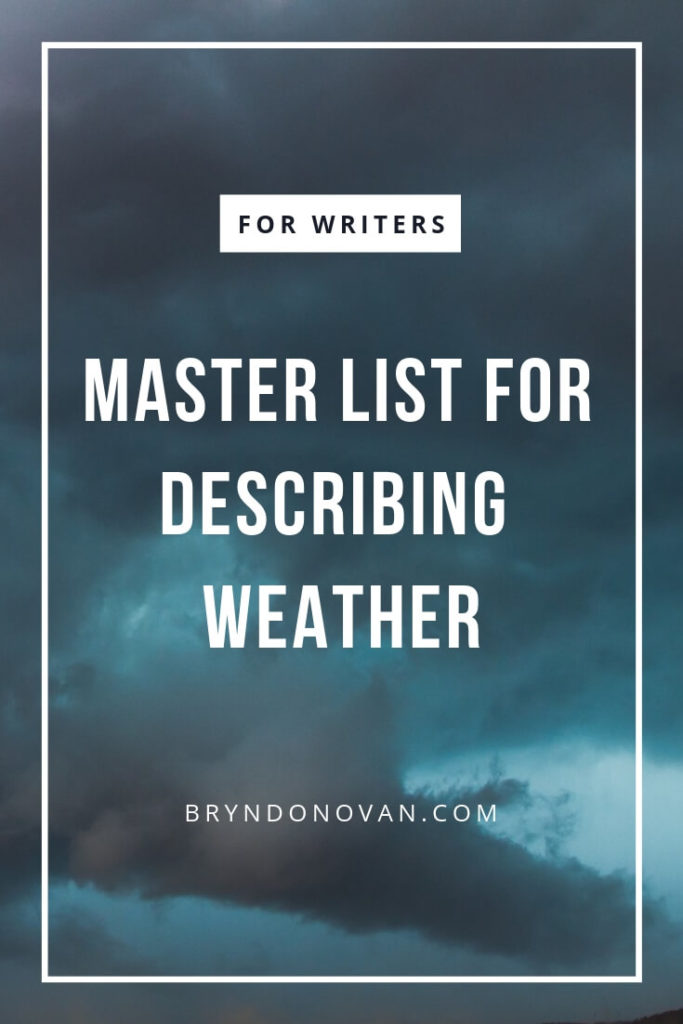
HOT WEATHER

blazing sunshine
glaring sun
baking in the sun
sun-drenched
scorching heat
extravagant heat
relentless sun
like a suana
dense tropical heat
radiating heat
blistering heat
oppressive heat
insufferable heat
suffocating heat
heat pressing down
searing sun
shimmering heat
like an oven
like a furnace
WARM / PLEASANT WEATHER

(“Pleasant” is a matter of opinion, of course.)
a beautiful day
a clear day
a temperate day
a golden day
a glorious day
heavenly weather
bright and sunny
a gorgeous spring day
a dazzling summer day
a brilliant autumn day
a vivid blue sky
a cloudless sky
fluffy white clouds
gentle sunshine
lazy sunshine
kind sunshine
filtered sunlight
dappled sunlight
welcome warmth
one of those rare, perfect days
the kind of day that made people forget to worry
the kind of day that lifted people’s moods
COOL WEATHER

refreshing air
stimulating cool air
invigorating cool air
bracing cool air
a nip in the air
a brisk day
a chilly day
weak sunshine
GRAY / OVERCAST WEATHER

(Most people don’t like gray days, so most of these descriptions are negative. I love them, so I had to add a few positive descriptions.)
colorless sky
a soft gray sky
a dove-gray sky
a gray day made for books and tea
steel-gray sky
granite sky
cement-gray sky
threatening clouds
foreboding clouds
COLD WEATHER
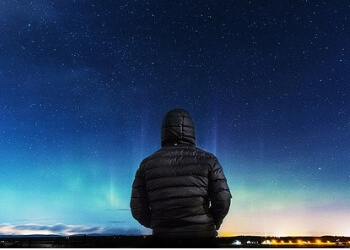
glacial air
bitter cold
brutal cold
bone-chilling cold
penetrating cold
devastating cold
numbing cold
punishing cold
dangerous cold
unforgiving cold
too cold to talk
so cold it burned one’s lungs
so cold it took one’s breath away

like a blast from a hair dryer
a gust of wind
insistent winds
heavy winds
strong winds
cutting wind
whipping winds
biting wind
wintry squall
violent gale
howling wind
shifting winds
restless wind
fresh breeze
soft breeze
balmy breeze
perfumed breeze
slight breeze
hint of a breeze
stirring breeze
wind rustling through the trees
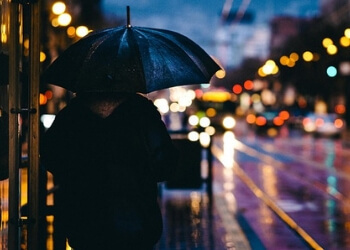
fine drizzle
gray drizzle
pebbles of falling rain
spitting rain
stinging rain
steady rain
rain falling in torrents
cascades of rain
rain beating down
shower of rain
sheets of rain
hard-driving rain
pelting rain
lashing rain
slashing rain
THUNDER AND LIGHTNING
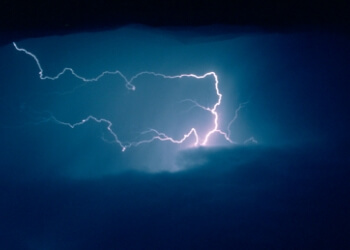
rumbling in the distance
a roll of distant thunder
crash of thunder
crackle of thunder
crack of thunder
clap of thunder
bang of thunder
booming thunder
rattled with thunder
earth-shaking thunder
tempestuous
a furious storm
flash of lightning
streaks of lightning
SNOW AND ICE
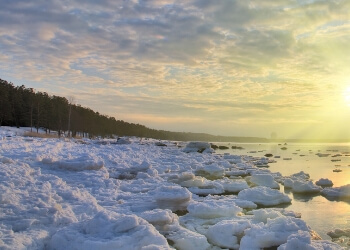
flurries of snow
dancing flakes
snowflakes floating down
snowflakes wafting down
swirling snow
falling thick and fast
big flakes falling like petals
blinding snowstorm
raging blizzard
sparkling expanses
blankets of white
caked with snow
boulders of snow
branches coated in ice
glittering ice
crystallized by frost
silvered with frost
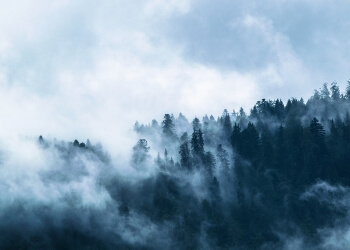
clouds of mist
swirling mist
billowing fog
cloaked in mist
cocooned in fog
shrouded in fog
enveloped by fog
smothered by fog
made mysterious by fog
the fog rolled in
the fog was burning off
the fog was lifting
the fog was clearing
the fog was dissipating
I have many lists like this in my book Master Lists for Writers: Thesauruses, Plots, Character Traits, Names, and More . Check it out!
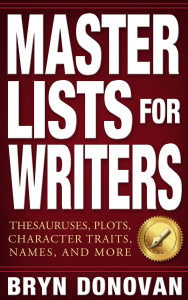
Do you describe weather conditions in your writing? Do you have a favorite example of a weather description? Let me know in the comments! Thanks for reading, and happy writing!
[spacer height=”20px”]
Related Posts
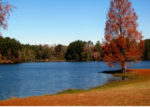
Share this:
21 thoughts on “ master list for describing weather ”.
In my current WIP, weather is a crucial element. Not only is the woman in the romance a professional photographer — of weather — but it is a weather phenomenon, namely a tornado, that brings them together. So the description of the sky and the weather is quite detailed in places (specially as the supercell storm roars down on them).
On another angle, the phrase “gloriously sunny” is one that despite having that horrible “ly” adverb (shudder) is so evocative of the type of weather and the POV character’s attitude (and possibly even the type of weather that has gone before), that it’s powerful. It says a huge amount with only two words.
Hi Chris! Oh, wow…that’s a lot more detailed than most of us ever get in writing about the weather. It sounds like a great premise!
I will need this list as I begin edits next month on my WIP. I currently live in Hawaii, but am writing a story at Christmas time in Vermont. 🙂 Thank you!
Aw, nice! That’s some very different weather from what you’re used to. 🙂
It really is! And traveling to the climate I need isn’t ideal right now. So, off to the freezer I go! 🙂
Wow! This is fantastic. Thanks. You ARE a master at this.
- Pingback: Master List for Describing Weather – Written By Bryn Donovan – Writer's Treasure Chest
This is comprehensive! It’s bookmarked for future use. Thanks!
Thanks, Steve, I’m glad you liked it!
Amazing list that goes beyond the words that I struggle with – especially describing the rain-painted setting of Snowdonia.
Love your lists. You don’t have one for beaches by any chance? Would this, including the weather be another book by any chance??
Hi, Nicole! It’s funny you should ask. 🙂 I am going to release a second, more expanded version of MASTER LISTS FOR WRITERS . It’s going to have several setting descriptions in there (including a whole list for beaches!), and the weather list will be in there, too! I’m hoping to get it done before November of this year, but we’ll see. Thanks for asking!
That’s awesome and look forward to it’s release.
- Pingback: ? Writing Links Round Up 7/1-7/5 – B. Shaun Smith
- Pingback: How to Write a Novel: Resources - MultiTalented Writers
- Pingback: ? Writing Links Round Up 8/19-8/23 – B. Shaun Smith
I am in Chinan. I happened to enter this web-link and want to learn more about writing, I wonder if there are any descriptive passages. I can only find some words and expressions…
That was really useful. Thank you!
- Pingback: The Power of Vision in Writing | Writers In The Storm
This list is fabulous. Thank you for sharing it. I will be consulting it when incorporating weather elements into writing my next picture book.
- Pingback: How’s The Weather In Your Story? – Writer's Treasure Chest
Leave a Reply Cancel reply
This site uses Akismet to reduce spam. Learn how your comment data is processed .
Discover more from BRYN DONOVAN
Subscribe now to keep reading and get access to the full archive.
Type your email…
Continue reading
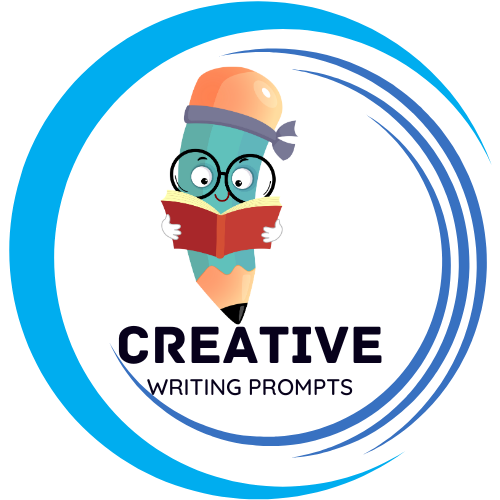
Weather Writing Prompts: Explore Atmospheric Narratives
My name is Debbie, and I am passionate about developing a love for the written word and planting a seed that will grow into a powerful voice that can inspire many.

Why choose our weather writing prompts?
Unleashing the power of weather in your writing, let weather weave the tapestry of your words, enhance your descriptive skills with weather writing prompts, crafting compelling characters: weather’s role in character development, (un)predictable weather: using weather as a plot device, from sunny to stormy: portraying mood and setting through weather, creating tension and conflict: harnessing the forces of nature, weather as a symbol: exploring deeper meanings in your writing, transforming atmosphere: tips for bringing weather to life in your narratives, enhancing the atmosphere: techniques to infuse life into weather in your stories, frequently asked questions, to conclude, weather writing prompts: explore atmospheric narratives.
Unleash your creativity and embark on a thrilling journey through atmospheric narratives with our weather writing prompts. Whether you’re an aspiring author or simply looking to enhance your writing skills, these prompts will transport you into the captivating world of weather and help you craft compelling stories that truly come alive.
Discover the magic of weather-related plotlines and characters as you engage with the unpredictable forces of nature. With our diverse range of prompts, you can explore a wide array of weather phenomena and their impact on individuals, societies, and even fictional realms. From raging storms to serene sunsets, each prompt presents a unique opportunity to vividly describe settings, evoke emotions, and weave gripping tales.
Here are a few reasons why our weather writing prompts are a must-try:
- Diverse scenarios: Our prompts cover a broad spectrum of weather events, allowing you to delve into both common and extraordinary meteorological situations.
- Deep exploration: You’ll have the chance to dive into the intricacies of weather patterns, uncovering the impact they have on people, places, and even otherworldly realms.
- Emotional connection: Experience the power of weather as a character in your narratives, leveraging its ability to heighten tensions, mirror characters’ moods, or even serve as a catalyst for change.
- Flexibility and adaptability: Our prompts are designed to suit writers of all backgrounds and genres, providing a foundation for creativity that can be tailored to your own unique vision.
Unlock your storytelling potential with our weather writing prompts and let your imagination take flight amidst the swirling winds, the gentle raindrops, and the commanding thunderclaps. Dive into a world where the atmosphere serves as the backdrop for unforgettable narratives!

Weather holds an immense power over our lives, and it can do the same for your writing. Incorporating weather into your stories adds depth, emotion, and atmosphere, enhancing the readers’ experience by immersing them in a vibrant and dynamic world. From the tranquil embrace of a warm summer breeze to the furious onslaught of a thunderous storm, the weather becomes a character itself, influencing the mood, shaping events, and reflecting the inner thoughts and struggles of your protagonists.
When skillfully employed, weather can become a tool to evoke a wide range of emotions. It sets the stage for pivotal moments, emphasizes tension, or serves as a respite from daily hardships. Picture a serene sunrise casting a golden hue on a character’s life after a period of darkness, or the relentless rain mirroring a protagonist’s despair during an important setback. By painting vivid weather scenes, you harness the raw power of nature to captivate your readers and enhance the overall impact of your writing.
- Transport your readers: Weather can transport your audience to different atmospheric surroundings, whether it be a windswept moor, a bustling city amid a gentle snowfall, or an arid desert swept by a scorching wind.
- Symbolism at its finest: Weather elements can serve as powerful symbols that echo the themes and conflicts of your narrative. A thick fog may mirror a character’s confusion, while a rainbow might symbolize newfound hope.
- Create a sense of urgency: Thunder, lightning, or an approaching storm can inject urgency into your story, propelling the plot forward and adding layers of suspense and anticipation.
Unlock the true potential of your writing by harnessing the influence of weather. Allow it to breathe life into your character’s journeys, shape their destiny, and ignite emotions within your readers. By embracing the power of weather, your writing will surge to new heights, enveloping your audience in a world they won’t want to escape.
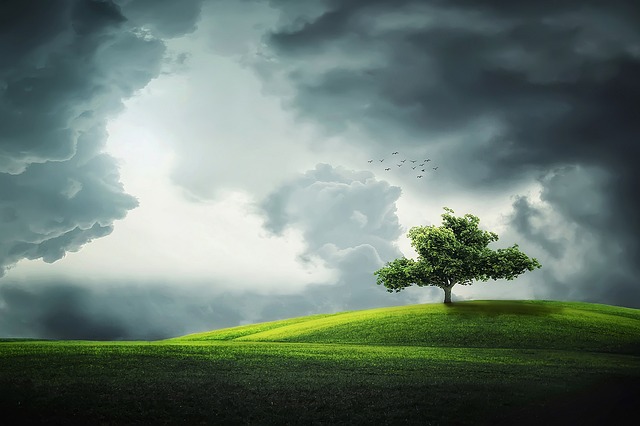
Are you looking to elevate your descriptive writing skills and immerse your readers in captivating atmospheric descriptions? Look no further! Our weather writing prompts are the perfect tool to help you hone your storytelling abilities while exploring the intricacies of Mother Nature’s moods. From blistering heatwaves to bone-chilling snowstorms, these prompts will ignite your creativity and enable you to write vivid scenes that transport your audience.
1. Dive into Extreme Weather Encounters: Step out of your comfort zone and challenge yourself to describe extreme weather events. Picture yourself caught in a wild thunderstorm, with lightning illuminating the sky above and torrents of rain cascading down. Explore the sensations, emotions, and details you would include to make your readers feel as though they are right there with you.
2. Capture the Serenity of a Calm Spring Morning: Shift gears and transport your readers to a tranquil scene of a peaceful spring morning. Paint a picture of dew-kissed flowers, the gentle sway of willow branches, and birdsong filling the air. Think of unique ways to describe the softness of a fresh breeze, the vibrant colors of budding blossoms, or the delicate scent of blooming flowers, enticing your readers to experience the serenity for themselves.
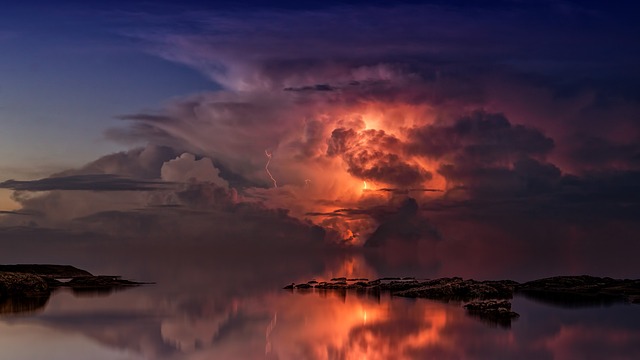
Weather is often overlooked as a powerful tool in crafting well-rounded and compelling characters. While it may seem mundane, the weather can add depth and dimension to your characters, revealing their personality traits, emotions, and even shaping their actions and decisions. By harnessing the influence of weather on your characters, you can create a more immersive and realistic story that captivates readers.
1. Setting the Mood: The weather can set the tone of a scene and evoke specific emotions in your characters. For example, a brooding and stormy sky can reflect a character’s inner turmoil, while a sunny and vibrant day can convey their joy and optimism. By carefully selecting weather conditions that align with your character’s current emotional state, you can enhance the reader’s connection with the character and intensify the impact of key moments in the story.
2. Symbolism and Foreshadowing: Weather can be a powerful symbol, subtly hinting at future events or foreshadowing important plot points. A sudden gust of wind might foreshadow a disruptive force entering the character’s life, or a serene morning mist could symbolize their inner clarity before a major decision. These symbolic weather patterns add layers of meaning, increasing the depth and complexity of your characters.
Weather is not just something we experience on a day-to-day basis; it can also add depth and excitement to our stories. As a powerful plot device, weather has the ability to influence events, reveal character traits, and create tension. By incorporating weather into your narrative, you have the opportunity to captivate readers and enhance the emotional impact of your story.
One of the compelling aspects of using weather in storytelling is its inherent unpredictability. Just like in real life, weather in literature can be a fickle force, throwing unexpected obstacles or opportunities in the path of your characters. From sudden thunderstorms to blistering heatwaves, extreme weather events can act as catalysts, driving the plot forward in ways that keep readers on the edge of their seats. Moreover, utilizing weather as a plot device allows you to tap into the symbolism associated with different weather conditions.
- Rain: Rain can represent renewal, washing away burdens, or creating a somber atmosphere.
- Snow: Snow often conveys isolation, purity, or the idea of starting anew.
- Heatwave: Oppressive heat can heighten tension, leading to heightened emotions or conflict.
- Fog: Fog can be used to create mystery, uncertainty, or a sense of confusion.
By skillfully utilizing these weather elements, you can introduce symbolism and foreshadowing, reinforcing the themes and motifs of your narrative. Furthermore, weather can act as a powerful tool in character development. How a character reacts or responds to changes in weather can reveal their true nature, their fears, or their resilience. For example, a protagonist seeking solace might find comfort in the rain, while another character might embrace the storm as a challenge to prove their strength.
When it comes to storytelling, weather can be a powerful tool for setting the mood and creating a captivating atmosphere. By carefully selecting and portraying different weather conditions, writers can enhance the readers’ experience and deeply immerse them in the story. Whether it’s a sunny day with clear skies or a stormy night filled with thunder and lightning, the weather can evoke a range of emotions and help shape the overall tone of the narrative.
One way weather can portray mood is through the use of contrasting elements. For example, a bright and sunny day with a gentle breeze can evoke feelings of joy, happiness, and serenity. On the other hand, a stormy setting, with dark clouds, torrential rain, and howling winds, can create a sense of tension, fear, or even chaos. By juxtaposing these two extremes, writers can effectively highlight the sharp contrast between different emotions or events in the story.
- Lightning and Thunder: The sudden crack of thunder or flash of lightning can bring a dramatic and intense element to a scene, representing danger, power, or even a turning point in the story.
- Fog and Mist: A thick layer of fog or mist can create an eerie and mysterious atmosphere, shrouding the surroundings in uncertainty and making them seem otherworldly.
- Gentle Rain: Soft rainfall can be used to symbolize renewal, growth, or a calming effect on the characters, often associated with reflection or introspection.
By leveraging the emotional impact of weather, writers can effectively draw readers into their narrative, making them feel as though they are experiencing the story alongside the characters. From a sunny day that sets the stage for a heartwarming romance to stormy weather intensifying a climactic scene, the use of weather as a tool for portraying mood and setting is truly limitless. So, next time you find yourself writing a story, don’t forget to consider the power of weather and how it can greatly enhance the depth and impact of your storytelling.
If you’re looking to create tension and conflict in your writing, why not turn to the powerful forces of nature for inspiration? These natural elements have an inherent ability to evoke emotions, drive plots forward, and create an atmosphere of suspense that keeps readers gripped till the very end.
One way to harness the forces of nature is through the use of extreme weather conditions. Incorporating a raging storm or a bone-chilling blizzard into your story can instantly raise the stakes and intensify the conflict. Imagine your protagonist being trapped in a deserted cabin, battling the relentless wind and snow, while their adversary lurks outside. The turmoil and danger lurking outside serve as constant reminders of the imminent threat, keeping readers on the edge of their seats.
- Lightning strikes: Symbolic of sudden and unexpected events, lightning strikes can add an element of surprise to your story.
- Tornadoes and hurricanes: These powerful natural disasters can create chaos and destruction, offering a perfect backdrop for high-stakes confrontations.
- Severe heatwaves: Intense heat can quickly escalate tensions among characters, leading to explosive conflicts.
To truly captivate your readers, it’s essential to delve beyond the superficial effects of nature and explore how they mirror the inner turmoil of your characters. Consider using metaphors and symbolism to represent their internal conflicts through the external forces of nature. By weaving these elements together, you’ll create a powerful narrative that resonates with readers and leaves them eagerly turning the pages.
Weather has long been used as a powerful symbol in literature, helping to convey emotions, foreshadow events, and add depth to the overall meaning of a story. Just as stormy skies can symbolize turmoil and conflict, sunny days can represent hope and happiness. By incorporating weather symbolism into your writing, you can create a more engaging and layered narrative that resonates with your readers on a deeper level.
One of the key advantages of using weather symbolism is its ability to evoke specific emotions. Just think about how a gentle rain shower can create a sense of calm and introspection, while a fierce thunderstorm can heighten tension and evoke a sense of impending danger. By carefully choosing the weather conditions in your scenes, you can enhance the mood and atmosphere, guiding your readers’ emotions and reactions. Whether it’s using a sweltering heatwave to symbolize the intensity of a character’s desires or a dense fog to represent confusion and uncertainty, the possibilities are endless.
Weather can be more than just a backdrop in your narratives; it can become a character itself, adding depth and emotion to your storytelling. Here are some tips for transforming the atmosphere and bringing the weather to life in your writing:
- Setting the Stage: Begin by establishing the current weather conditions to immerse your readers in the scene. Describe the temperature, wind, or any unique meteorological phenomena to create a vivid visual and sensory experience.
- Create Atmosphere: Don’t limit yourself to basic descriptions; delve deeper into the emotional impact of the weather. For instance, a gloomy rainstorm could reflect feelings of sadness or hint at impending danger. Utilize metaphors and similes, comparing the weather to a state of mind, to evoke a stronger emotional response from your readers.
- Show, Don’t Tell: Rather than simply stating the weather conditions, show how they affect your characters and their surroundings. Highlight physical reactions, such as hair blowing in the wind or clothes clinging to damp skin, to convey the intensity of the weather and its influence on the story.
Remember, the weather can drastically shape the mood, tension, and even plot progression in your narratives. Utilize these techniques to harness the power of the elements and elevate your storytelling to new heights.
Q: What are weather writing prompts? A: Weather writing prompts are creative prompts or ideas that encourage writers to explore atmospheric narratives inspired by elements of the weather.
Q: How do weather writing prompts work? A: Weather writing prompts provide a starting point or a theme related to weather. Writers can use these prompts as inspiration to write stories, poems, or descriptive narratives that revolve around the atmospheric conditions.
Q: Why are weather writing prompts beneficial? A: Weather writing prompts allow writers to tap into their imagination and create narratives infused with the power and beauty of the weather. They offer a unique way to explore descriptive storytelling and evoke emotions through atmospheric elements.
Q: Can you provide examples of weather writing prompts? A: Certainly! Here are a few examples of weather writing prompts: 1. Write a story that takes place during a torrential rainstorm. 2. Describe the setting of a coastal town during a foggy morning. 3. Write a poem inspired by the tranquility of a gentle snowfall. 4. Imagine a character caught in a raging thunderstorm and write about their experience. 5. Create a narrative in which a heatwave plays a significant role.
Q: Are weather writing prompts suitable for all genres? A: Absolutely! Weather writing prompts can be used in various genres, including fiction, poetry, and even non-fiction. They can add depth, imagery, and atmosphere to any type of writing.
Q: Can weather writing prompts be used by writers of all skill levels? A: Yes, weather writing prompts are suitable for writers of all skill levels. Whether you’re a beginner exploring your creativity or an experienced writer looking for fresh inspiration, these prompts can help you develop your writing skills and spark your imagination.
Q: How can weather writing prompts improve my writing? A: Weather writing prompts encourage the development of descriptive skills, enhance the ability to evoke emotions, and foster creativity. By incorporating weather elements into your narratives, you can engage readers on a sensory level and create a more immersive storytelling experience.
Q: Where can I find weather writing prompts? A: Weather writing prompts can be found in various places. You may discover them in writing resources, creative writing books , online writing communities , or even by simply observing the weather around you and letting it inspire your own ideas.
Q: Is it necessary to stick strictly to the weather prompts? A: Not at all! Weather writing prompts are meant to inspire your creativity. While adhering to the prompt is one approach, you can also use them as a springboard to create your unique narratives that incorporate elements of the weather in imaginative ways.
Q: Can weather writing prompts be used for collaborative writing exercises ? A: Certainly! Weather writing prompts can be an excellent tool for collaborative writing exercises. They provide a shared starting point and theme, allowing multiple writers to explore different aspects of the weather and weave them together into a cohesive narrative.
In conclusion, weather writing prompts offer a unique opportunity to explore atmospheric narratives, allowing writers to vividly depict settings and evoke emotions. So, grab a pen and let your imagination soar with the power of weather!
Do You Italicize Book Titles in Formal Writing? Expert Guidance
Writing in Math Prompts: Integrate Mathematics and Writing
Leave a Comment Cancel reply
Save my name, email, and website in this browser for the next time I comment.
Reach out to us for sponsorship opportunities.
Welcome to Creative Writing Prompts
At Creative Writing Prompts, we believe in the power of words to shape worlds. Our platform is a sanctuary for aspiring writers, seasoned wordsmiths, and everyone. Here, storytelling finds its home, and your creative journey begins its captivating voyage.
© 2024 Creativewriting-prompts.com

Describe The Weather In Writing With Better Vocabulary
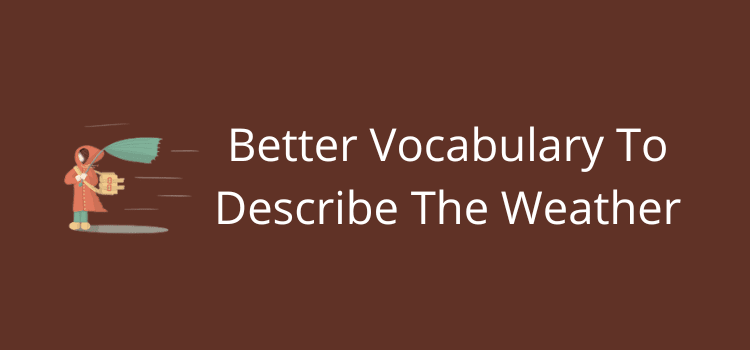
When you describe the weather in writing, you set the scene for your story or a part of your story.
It’s an opportunity to show readers the setting rather than tell them about the weather using a couple of quick adjectives.
Using highly descriptive or figurative language and a variety of grammar structures helps you paint the picture vividly in a reader’s mind.
In almost every story, both fiction and nonfiction, there is usually at least one reference to the weather.
Article Contents
How to describe the weather in writing
We all know this famous opening line from Edward Bulwer-Lytton’s 1830 novel, Paul Clifford.
It was a dark and stormy night.
Many have criticized the phrase, and Writer’s Digest went as far as to call it the literary poster child for bad story starters.
The main issue is that it uses two very weak adjectives: dark and stormy. Neither of them is usefully descriptive.
The second problem with the phrase is that it starts with a grammatical expletive .
When writing about the weather, using it was, or there was is a common writing fault. It’s because we so often refer to the weather as it.
But few people take into account what follows Bulwer-Lytton’s famous clause. It’s a pity because the complete sentence is a wonderful example of how to describe the weather in writing.
It was a dark and stormy night ; the rain fell in torrents—except at occasional intervals, when it was checked by a violent gust of wind which swept up the streets (for it is in London that our scene lies), rattling along the housetops, and fiercely agitating the scanty flame of the lamps that struggled against the darkness.
He uses descriptive noun phrases , strong verbs, and powerful adjectives.
The combination of these three elements paints a vivid picture for readers.
Choosing your vocabulary

You can find many lists of common and unusual words to describe the weather, so you have plenty of choices.
But you should avoid words that are too simplistic. It was hot, cold, windy, or rainy are all very weak expressions.
But if you describe the heat, the cold, the wind, or the rain with noun phrases, you can improve these easily.
The sun started baking early across the plains, delivering a scorching promise for the day ahead.
The cruel icy wind cut like a knife across her cheeks.
Rain, as always, arrived too little, too late to save the crops.
Words that are not widely understood are also worth avoiding. While it’s interesting to find new words, not all of them are useful.
A good example is petrichor. It is the smell or scent of rain arriving after a period of dry weather.
But it is difficult to use, and it might send readers hunting for a dictionary.
The petrichor gave a hint of hope to the farmers.
It would be better to use a descriptive phrase.
The sweet far off scent of rain on dying grass gave hope to the farmers.
Brontide is another, meaning the sound of distant thunder or rumblings of an earth tremor. Again, it’s a great word to know, but with very limited use in writing.
Try this simple formula
Anytime you need to write about the weather, keep this little trick in mind.
Start with a noun phrase, use a strong verb , then add a descriptive clause .
You also need to describe the noun and verb with adjectives and adverbs.
Here’s a quick example.
The heavy dark clouds rolled slowly and low across the parched pastures, but they were heartbreakers, as not a drop of rain fell before the cruel wind carried them away.
It’s an easy way to make sure you avoid the grammatical expletive and weak adjectives.
You can also experiment with similes or metaphors . For example, raining cats and dogs.
Use verbs that sound like the weather

Onomatopoeic verbs and words are perfect for describing the weather because they make a sound.
Here are a few examples to illustrate sound words.
The pitter-patter of raindrops.
Thunder rumbled overhead.
Light hail pinged on the window pane.
With each step, the fresh snow crunched underfoot.
A bolt of lightning cracked across the night sky.
A cold north wind hissed through the trees.
A sudden boom of thunder forewarned us of the approaching storm.
Verbs and words like these are extremely useful because they are action words and highly descriptive.
This article is not a lesson or lecture on how to describe the weather in writing.
It’s purely a reminder that you can always improve.
I have listed a few ideas above, but there are many more ways you can make the weather more interesting.
All it takes is to remember that the setting for a scene or a story needs careful thought and imagination.
But if there are two key takeaways from my article, they are these.
1. Avoid using the grammatical expletive when referencing the weather.
2. Use noun phrases and strong verbs.
If you do those two things, the rest of your weather scene setting will come very easily.
Related reading: Words To Avoid In Writing That Say Nothing
About The Author
Derek Haines
More articles.

What Is The Toughest Challenge All New Writers Face?

Keep Everything You Write And Never Delete Your Drafts
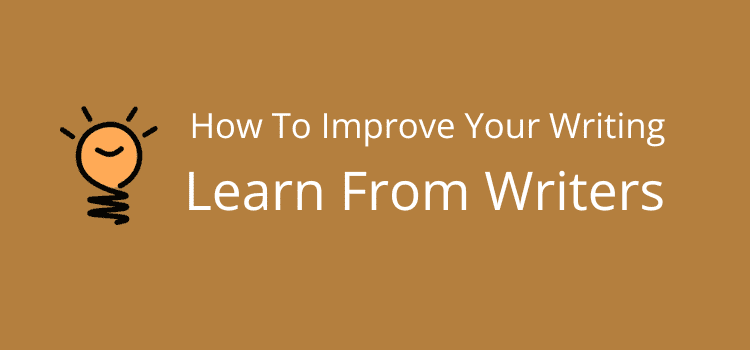
Learn From Writers – The Easy Way To Improve Your Writing
Leave a comment cancel reply.
Your email address will not be published. Required fields are marked *
Save my name, email, and website in this browser for the next time I comment.
To prevent spam, all comments are moderated and will be published upon approval. Submit your comment only once, please.
This site uses Akismet to reduce spam. Learn how your comment data is processed .
Privacy Overview

26 Metaphors for Weather: Exploring the Vivid Language of Nature
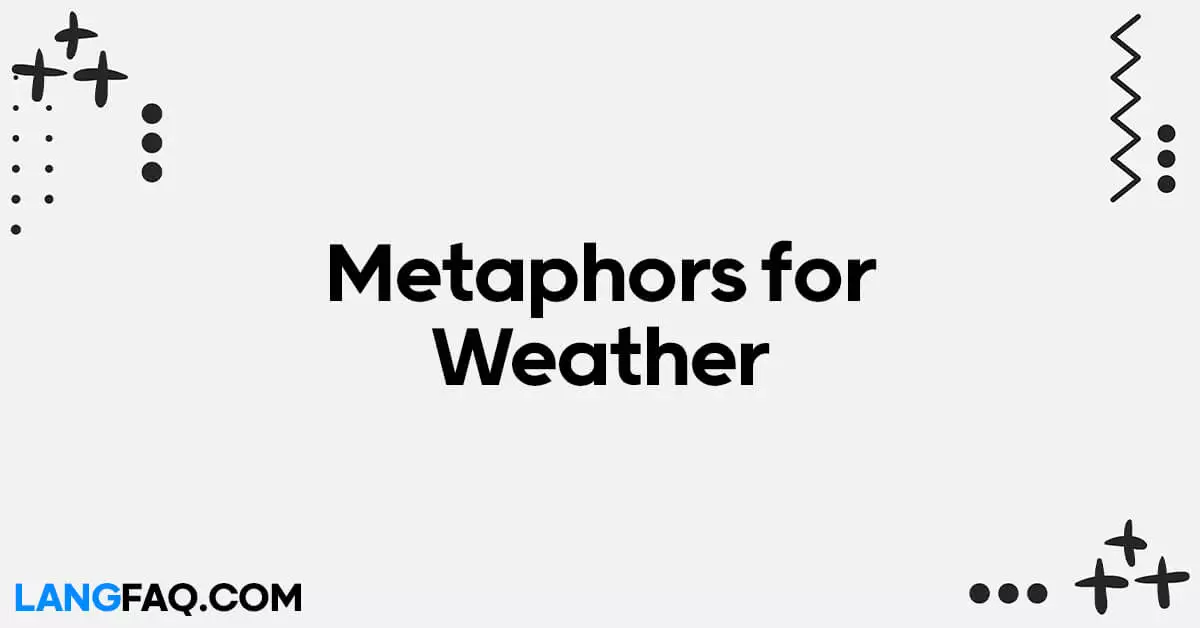
Share this post:
Weather has always fascinated us, inspiring poets, writers, and everyday conversations. It’s amazing how the elements can be described in countless ways, each metaphor painting a unique picture of nature’s moods. In this article, we delve into the world of weather metaphors, exploring 26 captivating expressions that bring the elements to life.
26 Metaphors for Weather
- The Sky’s Tears – Describing rain as “the sky’s tears” conveys a sense of sadness or melancholy.
- A Blanket of Snow – Snowfall can be compared to a cozy blanket covering the ground.
- The Roar of Thunder – Thunderstorms are nature’s orchestra, with thunder as its powerful percussion.
- The Whispering Wind – Gentle breezes are like whispers from the wind, carrying secrets and stories from afar.
- The Sun’s Embrace – Sunshine can be described as the warm and comforting embrace of the sun.
- Mist’s Mysteries – Fog and mist can shroud the world in mystery, concealing what lies beyond.
- The Icy Grip of Winter – Winter’s chill can be compared to an icy grip, as it freezes everything in its path.
- Dancing Raindrops – When raindrops fall , they dance on surfaces, creating a rhythmic and soothing melody.
- The Breath of Autumn – The cool, crisp air of autumn is like a refreshing breath of nature.
- The Fiery Sunset – A sunset can be likened to a fire in the sky, painting the horizon with vibrant colors.
- The Hush of Snowfall – As snow falls gently to the ground, it creates a hushed atmosphere.
- The Wrath of the Storm – Storms can be described as nature’s fury, unleashing its anger upon the world.
- The Gentle Caress of Spring – Spring’s arrival is like a gentle caress, awakening the world from its slumber.
- The Ocean’s Sigh – Waves crashing on the shore can be compared to the deep sighs of the ocean.
- The Whispers of the Leaves – Rustling leaves in the wind are like whispers from the trees, sharing their secrets with the world.
- The Velvet Night – A clear, starry night can be described as velvety, soft, and full of dreams .
- The Embrace of the Tides – High tides can be likened to the sea’s loving embrace, reaching out to touch the shore.
- The Song of the Birds – Birdsong in the morning is like nature’s symphony, announcing the arrival of a new day.
- The Scent of Rain – The earthy smell that follows rain can be compared to nature’s perfume.
- The Breath of Summer – Summer’s warmth is like a gentle breath, wrapping us in its comforting embrace.
- The Laughter of Sunshine – Sunshine can be described as nature’s laughter, bringing joy and brightness.
- The Cradle of Clouds – Clouds can be seen as a cradle, rocking the sky to sleep with their gentle movements.
- The Velvet Touch of Dusk – Dusk, with its soft, fading light, is like a velvet touch, signaling the end of the day.
- The Symphony of Rainbows – Rainbows are nature’s symphony of colors, a beautiful and harmonious display.
- The Whispers of the Stars – The night sky, adorned with stars, seems to whisper the secrets of the universe.
- The Fury of a Hurricane – Hurricanes can be likened to nature’s fury, a powerful and destructive force.
These metaphors add vividness and depth to descriptions of weather, allowing readers to visualize and connect with nature in a unique way.
1. The Sky’s Tears
Alternative Words/Phrases:
- Heavenly Weeping
- Celestial Crying
- Atmospheric Sorrow
Explanation: “The Sky’s Tears” is a metaphor that poetically describes rain as if the sky is shedding tears. It conveys a sense of sadness or sorrow associated with rainy weather.
Scenario: Formal Context: In a formal email discussing a weather-related event or news, you can use this metaphor to add a touch of literary flair. For example, “Dear colleagues, due to the recent inclement weather, the sky’s tears have been relentless, causing flooding in several areas.”
Informal Context: When chatting with friends about a rainy day, you might say, “I love how the sky’s tears make everything feel fresh and clean.”
Example Sentence: “The sky’s tears fell gently upon the garden, nurturing the flowers and bringing life to the earth .”
2. A Blanket of Snow
- White Comfort
- Winter’s Cover
- Frosty Blanket
Explanation: “A Blanket of Snow” compares snowfall to a cozy covering that blankets the ground, creating a serene and peaceful landscape.
Scenario: Formal Context: In a formal report about winter weather conditions, you can use this metaphor to describe the extent of snowfall. For instance, “The region experienced a substantial blanket of snow, resulting in travel disruptions.”
Informal Context: When sharing your excitement about the first snowfall with friends, you might say, “Waking up to a world covered in a blanket of snow is pure magic!”
Example Sentence: “The town was enveloped in a pristine blanket of snow, muffling the sounds of the bustling city.”
3. The Roar of Thunder
- Thunder’s Symphony
- Sky’s Drumroll
- Nature’s Percussion
Explanation: “The Roar of Thunder” likens thunderstorms to a powerful orchestra, with thunder serving as its percussion instrument. It conveys the intensity and dramatic nature of thunderstorms.
Scenario: Formal Context: In a scientific paper discussing atmospheric phenomena, you can use this metaphor to describe thunder’s role. For example, “Thunder, often referred to as the roar of thunder, is a result of rapid air expansion during lightning strikes.”
Informal Context: When chatting with friends during a thunderstorm, you might say, “Did you hear that incredible roar of thunder? It felt like the sky’s drumroll!”
Example Sentence: “The roar of thunder echoed through the valley, shaking the ground with its sheer power .”
4. The Whispering Wind
- Breezy Whispers
- Zephyr’s Secrets
- Gentle Murmurs
Explanation: “The Whispering Wind” compares gentle breezes to whispers from the wind, suggesting a sense of mystery and tranquility in the air.
Scenario: Formal Context: In a travel brochure describing a serene destination, you can use this metaphor to evoke a sense of calm. For instance, “Visit our resort and experience the soothing embrace of the whispering wind.”
Informal Context: When enjoying a peaceful evening with friends outdoors, you might say, “I love how the whispering wind rustles through the trees, it’s so relaxing.”
Example Sentence: “As the sun set, the whispering wind carried the scent of blooming flowers, creating a serene atmosphere.”
5. The Sun’s Embrace
- Sunshine’s Warmth
- Radiant Embrace
Explanation: “The Sun’s Embrace” portrays sunshine as a warm and comforting embrace from the sun. It conveys the idea of light, happiness, and positivity.
Scenario: Formal Context: In a motivational speech, you can use this metaphor to inspire optimism. For example, “Just as the sun’s embrace brightens our day, let positivity embrace your life.”
Informal Context: When complimenting a friend’s cheerful demeanor, you might say, “Your smile feels like a ray of the sun’s embrace!”
Example Sentence: “As I stepped into the sunlight, I felt the sun’s embrace warming my skin and lifting my spirits.”
6. Mist’s Mysteries
- Enigmatic Fog
- Fog’s Secrets
- Veil of Mystery
Explanation: “Mist’s Mysteries” describes fog and mist as shrouding the world in mystery, concealing what lies beyond. It suggests an element of intrigue and uncertainty.
Scenario: Formal Context: In a mystery novel’s atmospheric description, you can use this metaphor to set the mood. For instance, “The mist’s mysteries enveloped the ancient castle, hiding its secrets.”
Informal Context: When describing a foggy morning walk, you might say, “Walking through the mist’s mysteries felt like exploring a hidden world.”
Example Sentence: “The mist’s mysteries veiled the forest, creating an eerie and enchanting ambiance.”
7. The Icy Grip of Winter
- Winter’s Chill
- Frosty Embrace
- Freezing Grasp
Explanation: “The Icy Grip of Winter” characterizes winter’s cold as an icy grip, emphasizing its ability to freeze everything in its path.
Scenario: Formal Context: In a safety advisory about winter weather, you can use this metaphor to highlight the dangers of extreme cold. For example, “Beware of the icy grip of winter, which can pose severe health risks.”
Informal Context: When describing a particularly cold day, you might say, “I could feel the icy grip of winter as I stepped outside.”
Example Sentence: “The icy grip of winter turned the lake into a crystal-clear wonderland, with its surface frozen in time.”
8. Dancing Raindrops
- Rain’s Ballet
- Precipitation’s Waltz
- Liquid Choreography
Explanation: “Dancing Raindrops” portrays raindrops as gracefully dancing when they fall, creating a rhythmic and soothing melody.
Scenario: Formal Context: In a weather documentary, you can use this metaphor to describe rain’s beauty. For instance, “Watch as the dancing raindrops create a mesmerizing display in the heart of the storm.”
Informal Context: When reminiscing about a rainy day with a friend, you might say, “I sat by the window, listening to the soothing music of the dancing raindrops.”
Example Sentence: “The dancing raindrops on the rooftop provided a tranquil background score to the evening.”
9. The Breath of Autumn
- Fall’s Exhale
- Autumn’s Sigh
- Seasonal Breeze
Explanation: “The Breath of Autumn” likens the cool, crisp air of autumn to a refreshing breath of nature, symbolizing the changing of seasons.
Scenario: Formal Context: In a travel brochure promoting autumn getaways, you can use this metaphor to emphasize the rejuvenating aspects of the season. For example, “Experience the invigorating breath of autumn at our scenic retreat.”
Informal Context: When discussing your favorite season with friends, you might say, “There’s something magical about the breath of autumn, with its cool, crisp air.”
Example Sentence: “As I walked through the forest, I could feel the breath of autumn on my skin, a reminder of the changing seasons.”
10. The Fiery Sunset
- Sunset’s Blaze
- Dusk’s Inferno
- Evening’s Fireworks
Explanation: “The Fiery Sunset” describes a sunset as resembling a fire in the sky, with vibrant colors painting the horizon.
Scenario: Formal Context: In an art critique, you can use this metaphor to analyze a painting of a sunset. For instance, “The artist captured the intensity of the fiery sunset with bold strokes of color.”
Informal Context: When sharing your admiration for a stunning sunset with a friend, you might say, “Tonight’s fiery sunset was like nature’s own fireworks display!”
Example Sentence: “The fiery sunset bathed the landscape in hues of orange, red, and gold, creating a breathtaking spectacle.”
11. The Hush of Snowfall
- Snow’s Silence
- Silent Blizzard
- Winter’s Quiet
Explanation: “The Hush of Snowfall” characterizes the falling snow as creating a hushed atmosphere, suggesting a peaceful and serene ambiance.
Scenario: Formal Context: In a winter safety guide, you can use this metaphor to emphasize the need for caution during heavy snowfall. For example, “During the hush of snowfall, it’s crucial to stay prepared for adverse weather conditions.”
Informal Context: When reminiscing about a snow day with friends, you might say, “There’s something magical about the hush of snowfall, everything feels so calm.”
Example Sentence: “As the snowflakes descended, the hush of snowfall blanketed the city in tranquil stillness.”
12. The Wrath of the Storm
- Storm’s Fury
- Tempest’s Rage
- Nature’s Fury
Explanation: “The Wrath of the Storm” depicts storms as nature’s fury, highlighting their power, intensity, and potential for destruction.
Scenario: Formal Context: In a news report covering a severe storm, you can use this metaphor to convey the seriousness of the situation. For instance, “The wrath of the storm left a trail of devastation in its wake.”
Informal Context: When discussing stormy weather with friends, you might say, “I’ve never seen the ocean so turbulent, it’s like witnessing the wrath of the storm.”
Example Sentence: “The wrath of the storm unleashed torrential rain and fierce winds, causing widespread damage.”
13. The Gentle Caress of Spring
- Spring’s Tender Touch
- Season’s Embrace
- Nature’s Affection
Explanation: “The Gentle Caress of Spring” describes the arrival of spring as a gentle and tender touch from the season, awakening the world from its slumber.
Scenario: Formal Context: In a botanical magazine highlighting the beauty of spring blooms, you can use this metaphor to convey the nurturing aspect of spring. For example, “Experience the gentle caress of spring as blossoms grace our gardens.”
Informal Context: When expressing your love for spring to a friend, you might say, “I adore the gentle caress of spring; it’s like nature’s way of saying ‘hello.'”
Example Sentence: “As the days grew longer, the gentle caress of spring brought forth vibrant flowers and lush greenery.”
14. The Ocean’s Sigh
- Seaside Murmur
- Coastal Whispers
- Waves’ Exhale
Explanation: “The Ocean’s Sigh” likens the sound of waves crashing on the shore to the deep, soothing sighs of the ocean, creating a sense of tranquility.
Scenario: Formal Context: In a relaxation guide promoting coastal getaways, you can use this metaphor to evoke a sense of calm and peace. For instance, “Find solace in the ocean’s sigh during your seaside retreat.”
Informal Context: When describing a recent beach vacation to friends, you might say, “Listening to the ocean’s sigh every morning was the best part of our trip.”
Example Sentence: “The ocean’s sigh, a symphony of waves, lulled me into a state of complete relaxation.”
15. The Whispers of the Leaves
- Foliage’s Secrets
- Trees’ Murmurs
- Rustling Conversations
Explanation: “The Whispers of the Leaves” portrays the rustling of leaves in the wind as akin to whispers from the trees, suggesting a connection between nature and its observers.
Scenario: Formal Context: In an environmental awareness campaign, you can use this metaphor to emphasize the importance of preserving natural spaces. For example, “Protecting our forests ensures the continued whispers of the leaves for generations to come.”
Informal Context: When sharing your love for the outdoors with friends, you might say, “There’s something magical about the whispers of the leaves in the forest—it’s like nature’s own conversation.”
Example Sentence: “As I walked through the woods, the whispers of the leaves created a serene and enchanting atmosphere.”
16. The Velvet Night
- Night’s Softness
- Evening’s Elegance
- Starry Velvet
Explanation: “The Velvet Night” describes a clear, starry night as soft and elegant, full of dreams and tranquility.
Scenario: Formal Context: In a stargazing event announcement, you can use this metaphor to set the mood for an evening of celestial observation. For instance, “Join us for an enchanting night under the velvet night sky, where stars twinkle like diamonds.”
Informal Context: When expressing your fascination with the night sky to friends, you might say, “There’s something truly magical about the velvet night—it feels like the universe is wrapped in beauty.”
Example Sentence: “As I gazed at the starry, velvet night, I couldn’t help but feel a sense of wonder and awe.”
Frequently Asked Questions
Q: Are these metaphors commonly used in literature?
Yes, many of these metaphors are frequently used in literature, poetry, and everyday language to vividly describe weather phenomena.
Q: Can I create my own weather metaphors?
Absolutely! Creating your own weather metaphors can be a fun and creative way to express yourself and describe the world around you.
Q: Do weather metaphors vary by culture?
Yes, different cultures may have their own unique weather metaphors and expressions based on their climate and experiences.
Q: Are weather metaphors only used in English?
No, weather metaphors are used in many languages to convey the beauty and moods of the elements.
Q: Do these metaphors have deeper meanings?
Some weather metaphors may carry deeper symbolic meanings, while others are more straightforward descriptions of weather phenomena.
Q: Can I use these metaphors in my writing?
Absolutely! These metaphors can add depth and vividness to your writing, making it more engaging and descriptive.
Exploring the world of weather metaphors is like embarking on a poetic journey through the elements. Each metaphor paints a unique and vivid picture of nature’s moods, from the gentle caress of spring to the fury of a hurricane.
By incorporating these metaphors into your writing, you can add depth and beauty to your descriptions of the world around you.
Similar Posts

26 Metaphors for Chocolate
Share this post: Facebook X Pinterest Indulging in the world of chocolate transcends mere flavor. It’s a journey through metaphors that add layers of richness to our experience….
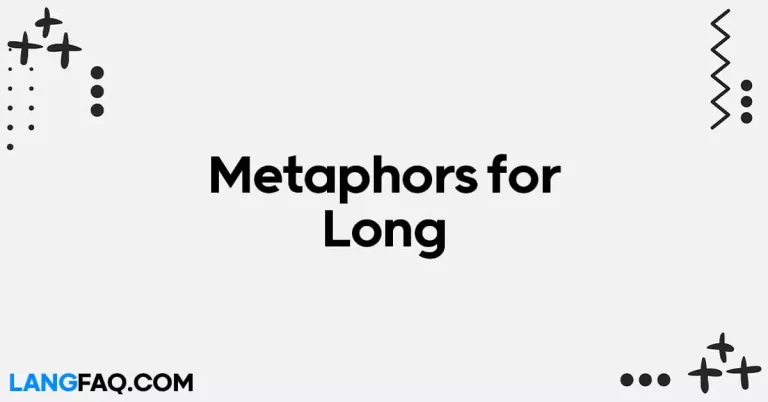
26 Metaphors for Long
Welcome to the fascinating world of linguistic artistry, where words paint pictures, and expressions go beyond the ordinary. In this article, we delve into “26 Metaphors for Long,”…
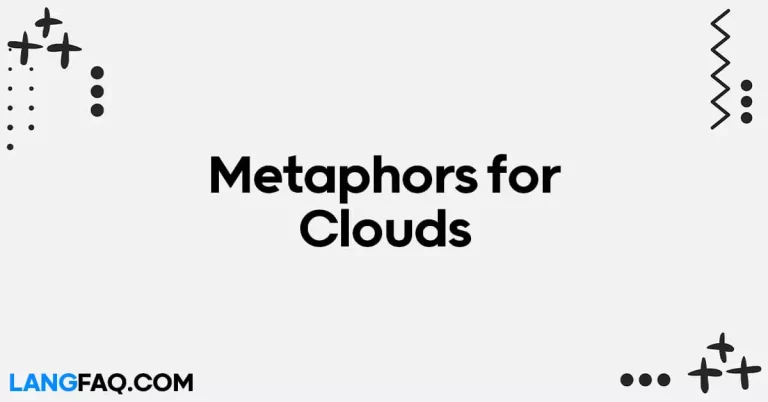
26 Metaphors for Clouds: Unveiling the Poetry of the Skies
Ah, the enchanting allure of the skies! The topic “26 Metaphors for Clouds” invites us to embark on a poetic expedition through the realms of celestial imagery. Join…

26 Metaphors for Leadership: Inspiring Insights for Success
Leadership is a dynamic and multifaceted concept that has been likened to various metaphors over the years. In this article, we delve deep into the world of leadership…
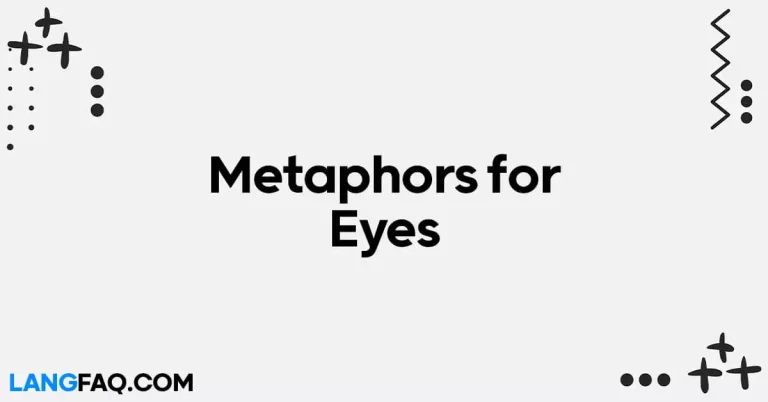
26 Metaphors for Eyes: A Window to the Soul
Eyes are not merely biological marvels that enable us to perceive the beauty of the world; they are also rich sources of symbolism and metaphor. Throughout history and…

26 Metaphors for Summer: Capture the Essence of the Season
Welcome to a poetic journey through the season of sunshine, vacations, and lazy days. Summer, with its scorching heat and vibrant beauty, has inspired countless metaphors that encapsulate…
Weather Symbolism in Fiction Literature: Learn How to Use It

By Kyle A. Massa
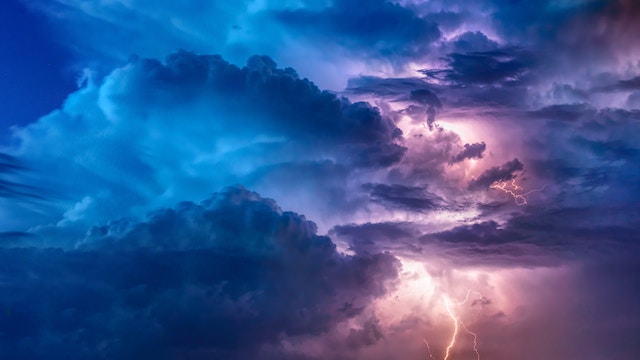
As I write this article, it’s raining. Through my window, I see the outline of trees dancing in the wind. The occasional car rolls by, momentarily illuminating the slick road before the world returns to darkness. I don’t think I’ll be going for a run today.
In my opinion, weather is one of the most interesting elements of fiction. A big storm or a sunny day can add symbolic meaning to one’s work. Furthermore, weather can underscore a feeling or mirror a dramatic conflict.
Weather is powerful, and today we’re going to examine a few ways to use it.
Weather as a Complicating Factor
Weather as mood, weather as symbolism, weather as all of the above, in conclusion.
Just like baseball games have rain-outs, stories have weather conditions that affect the outcome of events.
For an example from a classic, look no further than J.R.R. Tolkien’s The Fellowship of the Ring . As the Fellowship sets out on their journey to Mt. Doom, they decide to take a treacherous pass through the Misty Mountains.
A fine plan… if only the weather co-operated. Instead, they encounter a snowstorm, falling rocks, and eerie noises on the wind. These harsh conditions force them to turn back and reroute their path through the Mines of Moria. That’s where they run into the Balrog, and where (spoiler) Gandalf falls to his doom.
So, as we can see, weather can complicate a hero’s journey or even alter its course. It’s uniquely suited to do so because fighting weather is nearly impossible, even in a fantasy world like Tolkien’s. If you need a complicating factor, you’ll find few more effective.
Free story time! Well, at least a few sentences of a story. Let’s start off like this…
- Luna admired the twinkling sunlight peeking through the trees. The air surrounding her was mild and comforting, like floating in a warm bath.
If I’ve done my job right, you should feel relaxed. That’s the power of weather: in just two sentences, we can establish a distinct mood in our writing. Now, let’s examine the other end of the spectrum…
- Luna peered at the sparse moonlight creeping through the trees. The wind wailed mournfully and set her shivering in an instant.
All that’s changed here is the weather, yet the mood is totally different.
I don’t know about you, but I always feel better when it’s sunny outside. Likewise, readers will end up with a particular feeling based on the weather of your story.
If you want readers to feel happy, describe a sunny day. If you want them to feel apprehensive, describe a stormy evening. Speaking of which…
Ever notice how many descriptions of weather can double as those of humans? That’s because weather and human emotion often overlap. A few examples:
- Murph stormed into the store.
- “I want more ice cream,” the little girl thundered.
- His sunny optimism lit up the room.
Human emotion and weather are interconnected, even within the foundation of our language itself. As such, weather is an excellent tool for symbolizing emotion, and more.
William Shakespeare’s King Lear , for example, is one of the earliest examples of weather in fiction. When Lear wanders out into the wilds, a storm rolls in. The storm helps create a mood, yes. But it also goes deeper than that.
In this scene, Lear discusses his life with his Fool. He’s trying his best to understand the world around him and make sense of what’s happening with his kingdom and his daughters. Simultaneously, back in his castle things are going to hell.
Here, the chaos of the storm mirrors the chaos of the story. The weather symbolizes the wildness of the moment. It’s no coincidence that the storm dies down just as order is restored.
In your next book, consider underscoring a dramatic moment with symbolic weather. If the climax has an uncertain outcome, it will almost certainly be made more suspenseful by a storm. If your story has a happy ending, a sunny day can symbolize that fact nicely.
Or, if you want to leave your readers with a feeling of uncertainty, you might change your weather to overcast, with a chance of rain.
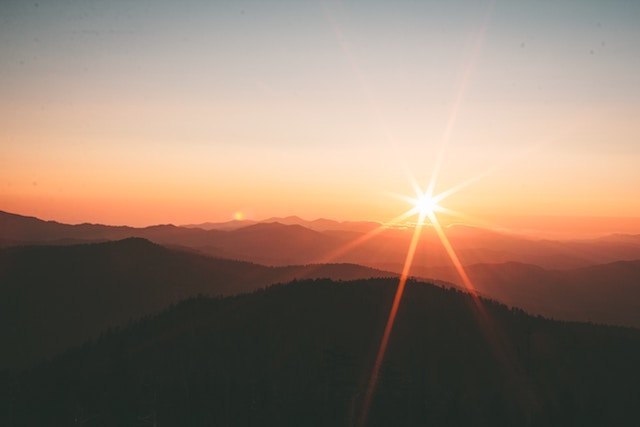
We’ve covered three ways to use weather in fiction. So why limit ourselves to just one per story? Why not use them all?
That’s what Neil Gaiman does in A Game of You , the fifth collected volume of his masterful Sandman comic book series. The story’s main character is a woman named Barbie (yes, like Barbie and Ken), who used to dream of being the princess of a fantasy realm when she was young.
When we meet her, however, she doesn’t dream at all. Barbie must descend back into her dreams to confront her own childhood (with the help of the titular Sandman, of course).
In the book’s final act, a hurricane descends upon New York City. The weather fulfills all three of our functions.
The hurricane is a complicating factor. Barbie’s friends are trying to buy her enough time to delve into her dreams and confront her past. However, when the hurricane threatens her safety, they must save her from the weather. One of Barbie’s friends, Wanda, even dies in the attempt.
The hurricane sets a clear mood: our story is in chaos and no one is safe. As the tension builds, the storm also builds in intensity, which heightens the emotions we’re already feeling.
The hurricane symbolizes Barbie’s inner turmoil. At its core, bad weather is an internal struggle. The earth provides us shelter, yet also destroys that shelter when natural disasters strike. The external weather symbolically mirrors the internal struggle of the main character. While the storm rages outside, Barbie battles her own past within her dreams. It’s symbolism like this that heightens an already exciting dramatic moment.
Though we don’t always consider it, weather is one of the most powerful tools in the writer’s toolbox. This is just about the only opportunity we’ll ever have to control the weather. So I say we should use it!
You can use ProWritingAid to improve your weather descriptions to set the mood in your novel. Use our Sensory Report to highlight which of the five senses you've used in a scene, then mix it up! Add some sound and taste descriptions to your weather.
Struggling to describe the weather in a poignant way? Try out our Paraphrase button to rewrite your sentence.

Be confident about grammar
Check every email, essay, or story for grammar mistakes. Fix them before you press send.
Kyle A. Massa
Kyle A. Massa is the author of the short fiction collection Monsters at Dusk and and the novel Gerald Barkley Rocks. He lives in upstate New York with his wife and their two cats. Learn more about Kyle and his work at his website, kyleamassa.com.
Get started with ProWritingAid
Drop us a line or let's stay in touch via:
Writers in the Storm
A blog about writing.

Power Your Fiction: Using Weather To Create Mood, Not Clichés
Angela Ackerman
Are you afraid of using the weather in your writing? If so, you're not alone. After all, if not careful, weather description can be a minefield of clichés. The sunny, cloudless afternoon at the beach. The gloomy rainstorm at a funeral. Overdone setting and weather pairings can lie flat on the page.
Then there's the danger that comes with using weather to mirror a character’s inner emotional landscape. Mishandling this technique can quickly create melodrama. We've all read a battle scene where lightning crackles as our protagonist leaps forward to hack down his foe in desperation. And how about that turbulent teen breakup where the character's tears mix with falling rain? Unfortunately these have been used so much that most readers tilt their head and think, Really? when they read a description like this.

Wow, weather sounds like a recipe for disaster, doesn't it? It’s no wonder that some writers are so nervous about using it they cut it from their manuscript. But here’s the thing… avoiding weather in fiction can be a fatal mistake.
Make Weather Your Friend
Weather is rich. Powerful. It is infused with symbolism and meaning. And most of all, weather is important to us as people. We interact with it each day. It affects us in many subtle ways. In fact, let’s test this by walking in a character’s shoes.
Think about walking down a street. It’s late afternoon, crystal bright, and a hot breeze blows against you. School’s out and kids run willy-nilly down the sidewalk, laughter ringing the air as they race to the corner store for a grape slush. Your sandals click against the pavement as you turn down between two brick buildings. The side door to an Italian restaurant is just past a rusty dumpster, and your fiancée’s shift is about to end. You smile, feeling light. You can’t wait to see him.
Now, let’s change the scene.
It’s sunset, and the weather has soured. Dark clouds pack the sky, creating a churning knot of cement above you. The sidewalk is deserted, and the wind is edged in cold, slapping your dress against your legs as you walk. You wish you’d worn pants, wish you’d brought a sweater. In the alley, garbage scrapes against the greasy pavement and the restaurant’s dumpster has been swallowed by thick shadow. The side door is only a few steps away. You can’t quite see it, and while all you have to do is cross the distance and knock, you hesitate, eyeing the darkness.
The same setting, the same event. Yet, the mood and tone shifted, all because of the weather I included in the backdrop. What was safe and bright and clean became dark and alien. This the power of weather--changing how people feel about their surroundings.
Steering Your Reader's Emotions
Readers bring the real world with them when they enter a story. Avoiding weather description will be noticed as it's such a natural part of the everyday, and it becomes a missed opportunity to steer how our readers feel.
Weather is a tool to evoke mood, guiding the character toward the emotions we want them to feel, and by extension, the reader as well. By tuning into specific weather conditions, a character may feel safe, or off balance. Weather can work for or against the character, creating conflict, tension, and be used to foreshadow, hinting that something is about to happen.
Because we have all experienced different types of weather ourselves, when we read about it within a scene, it reminds us of our own past, and the emotions we felt at the time. So, not only does weather add a large element of mood to the setting, it also encourages readers to identify with the character’s experience on a personal level.
So how do we write weather in a clear way, and stay away from the pitfalls?
Use Fresh, Sensory Images. In each passage, I utilized several senses to describe the effects of the weather. A hot breeze. Garbage scraping against the greasy pavement. A wind edged in cold, slapping against the legs. By describing weather by sound, touch and sight, I was able to make the scene feel real.
Avoid Direct Emotion-to-Weather Clichés. There are some pairings we should avoid as I mentioned above, and with so many different types of weather elements we really need to think past the usual ones. Avoid mirroring and instead show the character’s reaction to the weather. This is a stronger way to indicate their emotions without being too direct.
Choose Each Setting With Care. Setting and Weather should work together, either through contrast or comparison. In the first scene, we have beautiful weather and an alley as a final destination. These two are contrasts—one desirable, one not, but I chose to show enthusiasm and anticipation for the meeting to win out. In the second, the weather becomes a storm. Now we have two undesirable elements, and as such, they work together to build unease.
Weather can have a positive or negative effect on setting and change the character’s reaction to it, so don’t be afraid to use it! Just remember that with something this powerful, a light touch is all that is needed.

Fog Image: Pixabay
Do you use weather in your stories? How do you go about it?

15 comments on “Power Your Fiction: Using Weather To Create Mood, Not Clichés”
I love your books! Wonderful post- thank you for sharing!
Thank you Alan--you made my day! Season's Greetings!
Thank you so much for the post! I have all 3 of your books and love them. I'm working on a novella that involves weather, Snowbound with the Stork, but I'm using a little twist. I'm using the "snow" event that crippled Atlanta and several other cities in the South with 1 to 1.5 inches of snow.
Carrie, so very glad our books are helping you as you write. And that sounds great! It is funny--I live in Canada, and well, we get SNOW if you know what I mean. I knew someone who lives in Vegas and a few years back they got an inch of snow and it completely paralyzed the city. Schools were closed, the whole deal. Haha, an inch of snow! But, when you are expecting it and don't know how to deal with it as a city, I can imagine it would cause havoc!
Great post, Angela! My WIP is a quest story, so weather (and nature in general) was something I tried to keep in mind when I was writing the first draft. Not only can it enhance or (literally) dampen the mood, but it can be an obstacle to the character's physical journey. At one point I wondered, "Why don't many quest stories have a scene where it rains?" So, I picked a scene where rain would be appropriate, and wrote it that way.
Yes, weather is great at creating conflict, so glad to hear you're bringing it into your story for that reason. Weather is unpredictable, and because we humans like to be in control, it is the perfect way to remind our protagonist that he is not. There are so many deep ways weather can bring more texture to any scene, so i love reading stories where it is used well. 🙂
Hello Angela. Fellow writer, Cathy Orzech, wrote to me saying, "Thought you'd be interested in this take on "Using weather to create mood…." I enjoyed your use and detail of weather in Amanda's Room." Cathy was right. I enjoyed your article very much and, with your permission, would like to reprint it on my blog, "Something Significant." In "Amanda's Room," I wanted to use the weather in a unique way, so I went beyond using it as a backdrop and instead turned it into a central character in the book. Following Ken Follett's example in "Code to Zero," I also led each chapter with factual quotes about the weather which later became linked to what was happening in the story and the lives of the characters. If you are interested, let me know and I would be happy to send you a complimentary copy of the ebook. In the meantime, warmest wishes for a wonderful holiday season. Warmest Regards, Chuck Miceli
So glad you found this article helpful. It sounds like you really have a good handle on how to use weather, so good on you! Feel free to reprint, and if you could just link to this one here, people can follow it back to the original should they wish to (and discover a great blog while they are at it!).
Happy writing!
I do include weather. It's such an every day part of life, how can you not? But I try to remember that how I describe the weather needs to be through the prism of how my characters are feeling - a kid waking up on the first day of summer holidays is going to feel differently about a beautiful day than a kid being made to run laps in phys ed. The weather might be exactly the same but in one situation the sunshine is an invitation, in the other it's a merciless torturer.
This was a great post. Thanks for sharing it.
Yes, absolutely. All description should come through that emotional filter as it brings readers deeper into the mind and heart of the POV character. Glad you enjoyed the post!
[…] Ackerman discusses how to use weather to create mood, not clichés on Writers in the […]
Warmer weather and bright sunshine foreshadow the action in my YA winter adventure short story in this month's Cricket Magazine. Thank you for your insight on how to make weather integral to the plot and characterization.
Very happy to help, Victoria!
[…] Power Your Fiction: Using Weather To Create Mood, Not Clichés By Angela Ackerman […]
[…] “Power Your Fiction: Using Weather To Create Mood, Not Clichés” by Angela Ackerman (Wr… […]
Subscribe to WITS
Type your email…

Recent Posts
- 5 Valuable Writing Lessons from Dry Socket
- What’s at Stake? Here’s How You Find Out
- Marketing, I Didn’t Hate You Enough – One Author’s Journey
- How to Write Irresistible Character Relationships
- 3 Ways Writers Can Instantly Spot Telling
- Ellen Buikema
- Jenny Hansen
- Lynette M. Burrows
- Lisa Norman
Copyright © 2024 Writers In The Storm - All Rights Reserved
Beginning A Composition With Weather Descriptions
- Sunday, Sep 9th, 2018
- By: BIG IDEAZ
- Composition Framework
- Writing Techniques
Estimated reading time: 5 minutes
Weather description is one of the easiest ways for young writers (6 to 8 years old) to begin their compositions. This is also usually the first story starter that they are being taught in school.
For children who are weak in the language, writing a good weather description can be an easy and effective way to get them started in their composition.
However, most teachers do not encourage flowery weather descriptions such as these:
“White fluffy clouds dotted the azure blue sky as the sun beamed beatifically, casting a golden glow upon the earth.”
“The sky was an expanse of sapphire blue, dotted with feathery white clouds as the radiant rays of the sun shone brightly in the azure blue sky.”
You get the picture.
Proper Use of Weather Descriptions in English Compositions
Weather descriptions is an easy way for young writers to begin their stories. Primary 1 and 2 students can start their compositions with weather descriptions, if weather plays a part in the plot.
There is no need to memorise a hugh chunk of bombastic weather descriptions.
Simple words can sometimes be more effective than bombastic ones.
These are some of the weather descriptions written by our P1 and P2 students:
“It was a cool and breezy evening. A strong gust of wind blew against my face.”
“It was a bright and sunny morning. White, fluffy clouds drifted across the sky.”
“Lightning flashed across the sky. A storm was coming.”
Short. Simple. Readable.
The kids came up with these weather descriptions themselves, without memorising any bombastic phrases.
Most importantly, they are natural, something which children can understand, remember and apply in their writing.

Get this set of PSLE Model Compositions with writing techniques highlighted.
So, how can children be taught to write weather descriptions?
For children who are really weak in the language, even writing a simple sentence to describe a sunny day can be difficult. These children often resort to starting their compositions with “One day, we went…” or “One fine day, Peter was …” or “Last Sunday, my family and I …”.
Such story beginnings can be boring and not captivating.
Students can learn to write effective weather descriptions. In our classes, we get our students to do brainstorming.

1. Brainstorm and make a list of all kinds of weather that you can think of.
- cold and rainy
- cool and breezy
- bright and sunny
- scorching hot
2. For each weather type, imagine how the sky, sun, clouds and other weather elements look like.
Describe each element in simple, readable English .
Weather Type: BRIGHT AND SUNNY
Describe the sun: – shines brilliantly – bright – like a fire ball
Describe the sky: – clear, blue sky
Describe the clouds: – white, fluffy clouds – sunlit clouds
3. Form sentences using some of these descriptions.
It was a bright and sunny day. The sun shone brilliantly in the clear, blue sky .
It was a bright and sunny day. White, fluffy clouds drifted across the clear, blue sky .
The above 3 steps are effective in teaching young children (Primary 1 to 3) to come up with weather descriptions that sound natural. Most children are able to come up with beautiful weather descriptions without resorting to the method of memorising huge chunks of unreadable flowery language.
Download the FREE Brainstorming Sheet for Weather Description
Use Weather Descriptions Appropriately
Some students have the habit of starting every composition with weather descriptions, regardless of topic or setting. Remember to use weather descriptions only if weather plays a part in your story. For example, if a rainy weather contributes to the plot of the story, it is a good idea to describe the weather, especially the rain and the coldness. If a story is set outdoors, it is fine to describe the weather too.
However, many students fell into the trap of starting their compositions with describing the sun, the clouds and the sky when their story is set indoors! This is a huge mistake, which should be stopped.
Other Types of Story Beginnings
For stories which are not set outdoors or not affected by the weather, there are other types of story beginnings that can be used.
Students can begin their compositions with speech , which is also a common way of beginning a primary school composition.
Another effective way is to begin with a captivating statement or an intriguing question. Such a beginning hooks readers immediately to read on. When used correctly, it piques a reader’s curiosity and make them want to continue reading to find out what happens next.
Upper primary students can begin their stories with character descriptions . This is useful to show a change in the character at the end of the story. For example, a timid person who became courageous, or a bully regretting his actions and turning over a new leaf.
Beginning with an action is great if you want to move the story along quickly. Students can use suitable vivid verbs to clearly describe a character’s actions at the beginning of the story.

Get our FREE pack of 300 vocabulary cards that your child can use in his or her compositions.
Writing is a skill that improves with practice.
Enrol in our highly popular Writing Academy or Junior Writing Academy , our online courses that support primary school students in developing their English composition writing skills.

Related posts:
Author: BIG IDEAZ

7 Ways To Write About The Weather
Writing about the weather is boring? No way! We all check up on the weather several times each day. It decides so much of our lives. It should be part of your writing, too. This article offers you seven ways to write about the weather.
I love talking about the weather. It decides what I wear, how I travel (if I travel at all), my health, and even my mood . That’s not counting ‘bad hair days.’
Weather forecasts are important for farmers, for utility companies, and they help protect our lives and property. If you could control the weather, you’d get to decide who goes hungry in this world and who doesn’t. That’s how important the weather is. So, where’s the weather in your writing?
Many writers tend to make weather take the backseat. They don’t realise what the weather can do for them. So, let’s find out!
How to Use The Weather In Stories
Here are 7 ways to use the weather in your stories. We’ll start with the most common ones (also the most boring) and work our way up to the exciting stuff.
1. Weather As A Conversation Starter
‘What’s the weather like?’ is the world’s number one question. Whatever you say or ask about the weather can be used as a conversation starter. It’s that universal. That’s also where the danger lies. Talking about the weather is a cliché .
So, use these classic phrases sparingly (or not at all). If you absolutely need to, then make your characters aware of their need to use a cliché. Here’s an example:
Example: He just had to speak to the girl at the bus stop. But how could he make her talk? His brain was a blank. He knew he resorted to a cliché when he blurted out: ‘Nice weather, eh?’
Here, using the cliché is needed to show how desperate the character is to start a conversation.
2. Weather As A Backdrop
The most common use of the weather in fiction is as an inconspicuous element of the setting in sentences like this one:
Example: On a sunny day, Jane went to the public library.
Not exciting, right? That’s because the weather doesn’t do anything. It’s stated as a fact, obvious and boring. It’s telling. How about showing it instead?
Example: ‘A T-shirt is enough,’ Jane thought, glad to put her cardigan aside, as she left the house to go to the public library. Who needed extra baggage on a day like this?
In this example, the character experiences the weather. We even learn how that affects Jane’s mood. Much better, isn’t it?
3. Weather As A Sensual Experience
Let’s see if we can provide even more showing (check out these ‘ 101 Words To Describe the Weather ’). Weather is how we experience the force of the elements. That makes it intensely sensual: rain feels wet and cold, and it makes us depressed. Sunshine is the opposite.
There’s more. Humidity causes hair to get frizzy, and hairdos to collapse (‘bad hair days’). Many people get migraines under certain weather conditions. Air pressure in combination with temperature changes people’s blood pressure. Mental health can also be affected by the weather . Talk about feeling ‘under the weather!’
So, how about describing how the weather feels on your characters’ skin? How does it affect their mood?
4. Weather As Foreshadowing
As authors, we’re in control of the story, we steer our readers’ attention. Most readers appreciate it when we do this in a subtle way. That’s called foreshadowing . Authors hint at future events by creating an atmosphere (pun intended). Let’s look at our example from above and include the weather. Watch what happens at the end.
Example : ‘A T-shirt is enough,’ Jane thought, glad to put her cardigan aside, as she left the house to go to the public library. Who needed extra baggage on a day like this? She skipped down the street. At a traffic light, she looked up at the sky. ‘Funny,’ she thought, ‘that cloud wasn’t there when I left home.’
As readers, we expect that little cloud to grow to grow into a storm. This storm can happen literally (as setting), or emotionally. That little cloud could easily foreshadow difficult emotions.
Just by describing this change of weather, you plant a little seed for the reader to expect a future event. This, of course, also works in the other direction. Just think of the Bible when Noah saw the sky clearing up. He knew that God’s anger was lessening as well.
5. Weather As A Source Of Conflict
Braving the weather means we withstand the elements. This can create situations where a cast of characters needs to show their true colours.
Imagine people on a deserted island in the Caribbean. Everybody gets along well when the sun is shining, and fish are plenty. Now introduce a thunderstorm. You will have people fighting for shelter and the only remaining fish.
6. Weather As A Motif
In the Hollywood movie L.A. Story ’ (1991), actor Steve Martin plays a TV weatherman. He prerecords his forecasts because the weather in L.A. is always the same. His usual comment ‘Sunny and 72’ becomes a funny catchphrase in the story.
That way, the weather is introduced as the main character’s occupation and is used as a motif throughout the movie. It starts as a cliché, which becomes the source of ridicule (the temperature in his forecasts doesn’t even change one degree). In the end, the weather finally acts almost like a character (please read on).
7. Weather As An Acting Force
This is where the weather becomes most interesting! Let’s go back to the movie ‘L.A. Story.’ The TV weatherman falls in love with Sara, who at some point wants to leave the city by plane. But the story has shown us so far that these two are meant to be together. How can this be resolved?
The weather makes it possible. A rainstorm prevents the plane from taking off, and Sara is reunited with her weatherman. The weather needed to take action, or the narrative would not have reached a happy ending.
This is not the only story in which the weather took centre stage. Look at the classics! Many ancient gods had attributes connected to the weather: Zeus had bolts of lightning, and Tempestas was the Roman goddess of storms and sudden weather (guess where the word ‘tempest’ comes from!). The Egyptians had four gods for wind (one for each direction). In Russian folklore, Santa Claus is known as Father Frost. These classic characters act through the weather!
The weather is ultimately the way humans experience the force of the elements. We can all choose to ignore the weather, but we can’t escape it.
The Last Word
Make the weather work for your stories. Don’t just mention it; let it give an extra layer to your setting, increase the showing, add conflict, and even function as if it were a character . I hope I have been able to show just how exciting the weather can be.
There’s one more thing: the weather can take over your language. There are so many idioms and phrases connected to the weather! If you’d like to know more, then please watch out for my next post. It’ll include a cheat sheet with ’ 80 Weather Expressions.’

By Susanne Bennett.
Susanne is a German-American writer who is a journalist by trade and a writer by heart. After years of working at German public radio and an online news portal, she has decided to accept challenges by Deadlines for Writers . Currently she is writing her first novel with them. She is known for overweight purses and carrying a novel everywhere. Follow her on Facebook .
More Posts From Susanne
- 7 Steps To Celebrate ‘The End’
- How To Write A Cosy Mystery
- Punctuation For Poets
- The Powerhouse Of Writing 6: Colons, Semicolons, & Dashes
- The Powerhouse Of Writing 5: Quotation Marks
- The Powerhouse Of Writing 4: The Question Mark
- The Powerhouse of Writing 3: The Exclamation Mark
- The Powerhouse of Writing 2: The Comma
- The Powerhouse Of Writing 1: The Full Stop
- How To Play Surrealist Word Games
Top Tip : Find out more about our workbooks and online courses in our shop .
- Featured Post , Setting , Susanne Bennett
© Writers Write 2022

How to Describe Being Cold in Writing (21 Tips + Examples)
When it comes to describing coldness, there are numerous ways to create an immersive atmosphere that your readers can almost feel.
Here’s how to describe being cold in writing:
Describe being cold in writing by using sensory details, emotions, environmental factors, and the character’s physical reactions. Express coldness through shivering, numbness, the sting of the wind, or the crunch of snow. Leverage metaphors, similes, and personification.
Keep reading to learn everything you need to know to describe being cold – with lots of examples.
21 Best Tips for How to Describe Being Cold in Writing (Master List)

Table of Contents
Let’s explore the best for how to describe being cold in writing.
21 elements to describe coldness:
- Shivering body
- Stinging skin
- Frosty breath
- Crystal clear iciness
- Numb extremities
- Ice formation
- Chilled-to-the-bone cold
- Frozen landscapes
- Winter darkness
- Cold-induced emotions
- Dull sounds
- Wind’s effect
- Wildlife reaction
- Cold-induced actions
- Icy textures
- Clothing adjustments
- Cold-induced pain
- Inanimate objects reaction
- Harsh environment
- Physical incapacitation
1. Shivering Body
When describing cold, a shivering body is often the first thing that springs to mind.
This is a primal, automatic reaction to a drop in temperature.
The body tries to generate heat by creating movement, resulting in the shaking or shivering we all know too well.
It’s the body’s desperate attempt to warm itself up, an internal fireplace stoking its own flames in a losing battle against the cold.
This can be a subtle shiver, a quiet, chattering of teeth or a violent, full-body tremor.
The degree of shivering can help to demonstrate the intensity of the cold, while also revealing a character’s physical state and resilience.
Example: “As he ventured deeper into the forest, a tremor started in his legs, slowly creeping up his spine until his entire body convulsed in a violent shiver. His teeth clattered like a rogue typewriter, each chatter a Morse code of distress against the biting cold.”
2. Stinging Skin
Cold has a particular effect on the skin, often described as a stinging or burning sensation.
This might seem counterintuitive, as we associate burning with heat, but the prickling sensation of freezing temperatures can feel remarkably similar.
The stinging can begin as a slight discomfort on exposed skin, gradually increasing in intensity as the temperature continues to drop.
Describing this sensation can be an effective way to create a vivid picture of cold in the reader’s mind.
Example: “The wind sliced through her clothing, each gust a thousand icy needles against her skin. It stung and prickled, the cold searing her as though she’d been kissed by frostbite.”
3. Frosty Breath
Visual imagery plays a huge part in describing the cold.
One of the most recognizable visuals is seeing your breath as a misty cloud in front of you.
It provides a clear visual cue for the reader and shows the difference in temperature between the body’s warmth and the air’s chill.
This frosty breath can be used to emphasize quiet, solitary moments or the harshness of the environment.
You can also use it to show the pace and depth of a character’s breath, reflecting their emotional state or physical exertion.
Example: “His breath ghosted out in front of him, a fleeting wisp of warmth swallowed instantly by the frigid air. Each puff, a testament to the bitterness around him, fading into the winter ether as quickly as it appeared.”
4. Crystal Clear Iciness
One of the unique qualities of cold weather is the crystal clear clarity it can bring.
Descriptions of this can paint beautiful, vivid pictures for the reader.
The frost-tinged world seems sharper, colors more intense, and every sound carries a different note.
The chilling effect of the cold can create stark, crisp imagery that contrasts wonderfully with the idea of a blurred, muffled world of warmth.
This characteristic sharpness can enhance the sense of isolation or the beauty inherent in a frozen landscape.
Example: “The world was etched in crystal, the coldness rendering every detail sharp and clear. The delicate frost patterns on the window, the frozen droplets clinging to the bare tree branches, every individual snowflake in its unique glory – all were highlighted by the cold’s glass-like clarity.”
5. Numb Extremities
The feeling of numbness is another key sensory detail when describing cold.
As the body’s defense mechanism against freezing temperatures, it redirects blood flow from the extremities to vital organs, causing a loss of sensation in these areas.
Fingers, toes, noses, and ears are usually the first to go numb, followed by hands and feet if the exposure continues.
The intensity of this numbness can be a powerful tool for showing the severity of the cold.
Example: “Her fingers had long ceased to feel anything, numb stumps on the end of her hands. Each attempt to move them was like manipulating someone else’s, the familiar connection between brain and limb severed by the cold.”
6. Snowfall
Snowfall, as a visual and sensory phenomenon, is an excellent tool to depict a cold atmosphere.
It introduces unique lighting, mutes sounds, changes landscapes, and adds a magical or ominous mood, depending on your story’s needs.
Describing how snow falls, its texture when it hits the skin, the way it piles up and transforms the environment can all help immerse your reader.
The density and speed of snowfall can also reflect the intensity of the cold.
Example: “The snow began to fall in earnest, a curtain of white descending from the sky, each flake a silent whisper against her cheeks. The world around her softened, swallowed up by the relentless onslaught, a cascade of icy feathers blanketing the world.”
7. Ice Formation
The formation of ice and frost adds a visual and tactile element to the description of cold.
Ice can form on surfaces, plants, water bodies, and even eyelashes or hair, presenting opportunities for some stunning imagery and metaphorical language.
The texture of ice—whether it’s slick, sharp, bumpy, or brittle—can reflect the intensity and impact of the cold.
The formation of ice can introduce new challenges or dangers for characters, adding to the plot.
Example: “An icy rime clung to every surface, a glistening crust that squeaked underfoot. It wrapped the world in a glacial embrace, turning every leaf, branch, and blade of grass into delicate glass sculptures, brittle and beautiful.”
8. Chilled-to-the-Bone Cold
Describing a deep, internal cold can help convey an extreme, unbearable coldness.
This kind of cold is often described as reaching into the bones or marrow, affecting a person from the inside out and leaving them feeling as though they will never be warm again.
Such visceral descriptions are useful not only to emphasize the cold’s severity but also to underscore a character’s resilience or vulnerability.
They can contribute to the sense of despair, dread, or determination that extreme cold often evokes.
Example: “The cold was inside her now, a deep, marrow-chilling frost that seemed to leech the warmth from her very soul. She felt as though she’d swallowed an iceberg, every breath, every heartbeat only spreading the icy chill further.”
9. Frozen Landscapes
Describing a frozen landscape can set the scene for a cold environment.
The transformation of familiar sights—rivers turned into ice, snow-covered mountains, frosted trees—can effectively convey the impact of the cold.
Additionally, describe how characters interact with this altered landscape:
- Trudging through deep snow
- Slipping on ice
- Huddling against the wind
It also provides opportunities for beautiful, poetic descriptions that can enhance your story’s atmosphere.
Example: “The landscape lay locked in ice, a world paused and muted by winter’s grip. What was once a babbling brook was now a still, frozen snake of ice, trees sagged under the weight of their snowy coats, and the once vibrant green fields were now an unending expanse of white.”
10. Winter Darkness
Cold often comes hand in hand with darkness.
Shorter days, long nights, and often cloudy or overcast skies can add to the sense of coldness.
Describing this lack of light, the different quality of winter sunlight, or the unique brightness of a moonlit snowscape can contribute to the atmosphere.
The darkness can also reflect a character’s mood, add to the sense of isolation or vulnerability, or introduce new challenges.
Challenges such as limited visibility or the need for artificial light sources.
Example: “The sun had barely risen before it began to dip again, a weak, watery light that did little to penetrate the cold. Darkness fell like a heavy blanket, the world reduced to the circle of light thrown by their lantern, the winter night as cold as it was dark.”
11. Cold-induced Emotions
Using emotions to describe the cold can offer a more internal perspective, adding depth to your character’s experiences.
You can explore how cold affects mood, thought processes, or psychological states.
This might be discomfort, irritation, dread, or even joy and exhilaration, depending on the context.
Relating the cold to emotions fosters a more personal, subjective experience, grounding the reader in the character’s perspective.
This approach can also be used to highlight a character’s resilience, fears, or vulnerabilities.
Example: “A deep melancholy settled over him, as pervasive and chilling as the winter around him. Each shiver, each frosty breath was a physical echo of the icy dread that filled him, an emotion as biting as the wind.”
12. Dull Sounds
Cold weather often affects how sound travels, making noises seem more muffled or subdued.
This can create a sense of tranquility or isolation, depending on your narrative’s needs.
Describing the quality of sounds—the crunch of snow underfoot, the crackle of ice, the hush of a snow-covered landscape—can help to create a more immersive sensory experience.
The muted world can mirror a character’s emotions or add to the overall mood of a scene.
Example: “The world was quiet in the grip of winter, sounds muffled under the blanket of snow. Her footsteps were a soft crunch in the silence, a whisper in the frozen stillness. Even her breath seemed louder, a frosty mist that hung in the air like a silent exclamation.”
13. Wind’s Effect
The wind can significantly intensify the feeling of cold.
A strong gust can steal the breath away, sting exposed skin, and cause heat to dissipate more quickly.
It can also create visual effects, like snowflakes swirling in the air, trees bending under its force, or loose snow being swept away.
Describing the wind’s strength, direction, sound, and effects can help to convey both the objective coldness and its impact on characters and their environment.
Example: “The wind cut through her, a biting, bitter gust that seemed to come from the very heart of winter. It tugged at her clothes, stole her breath, and sent a fresh wave of shivers through her body, a relentless, icy enemy.”
14. Wildlife Reaction
Observing the behavior of wildlife can be another way to depict a cold environment.
Many animals have particular responses to the cold, from hibernation and migration to physical changes like growing thicker fur or feathers.
Describing these changes can provide a sense of the season’s progression, enhance the sense of realism, or create opportunities for metaphor and symbolism.
It can also underline the natural order’s relentlessness and the struggle for survival that cold often represents.
Example: “The squirrels had vanished, their chatter replaced by the cawing of crows, the only brave souls to defy the winter. Their footprints dotted the snow like tiny messages, a testament to life persisting in the frosty silence.”
15. Cold-induced Actions
Describing actions induced by cold can provide both visual cues and a sense of the cold’s impact on characters.
This might include shivering, rubbing hands together, huddling for warmth, pulling clothes tighter, or quickening their pace to generate heat.
Such descriptions can help to illustrate the physical discomfort and the instinctive, often futile attempts to ward off the cold.
They also add movement to the scene, creating a more dynamic picture for the reader.
Example: “He pulled his collar up, burrowing deeper into his coat as if he could hide from the cold. Every few steps, he would stop, stomp his feet, rub his hands together in a vain attempt to generate some warmth, each action a dance in the rhythm of winter.”
16. Icy Textures
Describing the textures associated with cold can enrich your story’s sensory experience.
This might include the crunch of snow underfoot, the smoothness of ice, the crispness of frosted leaves, or the stiffness of cold-soaked clothes.
Textures can evoke tactile sensations, engaging the reader’s sense of touch.
This can enhance the realism and immersive quality of your descriptions, helping to create a more believable, relatable cold environment.
Example: “The snow crunched satisfyingly under her boots, a crisp, compacted sound that was music to her ears. Each step was a tactile delight, the delicate surface giving way to her weight, a dance between her and the frost-touched earth.”
17. Clothing Adjustments
The kind of clothing characters wear and how they adjust them can also convey cold.
Bundling up in multiple layers, pulling on woolen socks, tying scarves tight, and donning gloves or mittens are all effective images that instantly suggest a chilly environment.
These details can also offer insights into your character’s preparedness, personality, or experiences.
A character used to the cold might dress more efficiently, while a character not accustomed to such temperatures may be ill-equipped.
Example: “She wound her scarf tighter, pulling it up to cover her nose, the wool scratchy against her skin. Every piece of clothing she had was layered on her body, a makeshift armor against the cold, yet she still felt the chill seeping in, relentless and unforgiving.”
18. Cold-induced Pain
Cold can cause physical discomfort and pain, from the prickling sting of freezing skin to the deep ache of chilled bones.
Describing this pain can underscore the cold’s severity, its impact on the characters, and the physical challenges they face.
This approach can add tension, elicit empathy, or test a character’s resilience.
Painful sensations can make the cold feel more immediate and real, grounding the reader in the character’s physical experience.
Example: “A deep, gnawing ache had settled into his bones, a constant reminder of the unforgiving cold. Every shiver was a jolt of pain, every breath a sharp sting in his chest, the cold no longer an external force but a cruel tormentor within.”
19. Inanimate Objects Reaction
Describing how inanimate objects respond to the cold can also help to establish a cold environment.
This could include a layer of frost on a window, a frozen water pipe, condensation on a cold surface, or the creaking sound of contracting metal.
Such descriptions can make the cold seem pervasive, affecting all aspects of the environment.
They can also create sensory details, enhance the scene’s atmosphere, or introduce practical challenges for the characters.
Example: “The window was a sheet of ice, the once-clear glass now opaque with frost. Each breath he exhaled added to the condensation, his world shrunk to this tiny, frost-fringed view of the winter outside.”
20. Harsh Environment
Describing the harshness of a cold environment can convey the challenges and dangers that characters face.
This might include treacherous ice-covered paths, blinding snowstorms, the risk of hypothermia, or the difficulty of finding food or shelter.
The harsh environment can serve as a plot-driving force, testing characters’ resilience, decision-making, and survival skills.
It can also contribute to the story’s overall mood, whether that’s one of dread, desperation, or determination.
Example: “The world was a maze of ice and snow, every path a treacherous challenge, every gust of wind a potential threat. The cold was no longer just a discomfort; it was an adversary, a ruthless, relentless force of nature.”
21. Physical Incapacitation
Cold can lead to physical incapacitation, such as slowing movements, stiffening muscles, or causing fatigue.
Describing these effects can heighten the sense of danger, underscore the characters’ vulnerability, and increase tension.
The progressive nature of such symptoms can also create a sense of urgency, pushing characters to seek shelter, find warmth, or make difficult decisions.
They make the cold a tangible threat, adding stakes to your story.
Example: “His movements were slowing, each step a herculean effort against the numbing cold. His muscles had stiffened, his mind was foggy with fatigue, the cold slowly but surely claiming him, turning him into a statue in a frozen world.”
How to Describe Warming Up After Being Very Cold
Focus on the gradual return of feeling, the soothing comfort of warmth, and the relief it brings.
You might describe the thawing of frozen fingers and toes, the gradual easing of shivers, or the flush of warmth spreading through the body.
Here’s an example:
“ His frozen hands clasped around the hot mug, the warmth seeping into his stiff fingers, bringing them back to life. The hot drink slid down his throat, a trail of warmth that radiated outwards, fighting back the cold that had settled in his bones. Slowly, the shivers that had wracked his body eased, replaced by a comforting warmth that cocooned him, a welcome reprieve from the biting cold .”
How to Describe Someone Being Woken Up by Cold Water
When describing someone being woken up by cold water, focus on the shock of the cold, the suddenness of the wake-up, and the physical sensations.
This could include the gasp of surprise, the jolt of cold against skin, and the instant alertness that follows.
“ A sudden cold shock jolted him awake, the icy water dousing him like a wake-up call. His eyes snapped open, a gasp tearing from his lips as the freezing wetness soaked him to the skin. His heart hammered in his chest, his body reacting to the sudden intrusion of cold, snapping him out of the sleepy haze into a world of shivering alertness. “
How to Describe Being Extremely Cold
Describing being extremely cold often involves a balance of physical sensations, emotional reactions, and environmental details.
It’s about capturing the numbing, all-encompassing nature of extreme cold—the way it seeps into the skin, chills the bones, freezes the breath in the air, and stings any exposed skin.
It’s a cold so intense it transforms the landscape into a frigid wonderland and slows life down.
As if each movement is a battle against an unseen icy force.
When your character is extremely cold, they might slip into hypothermia.
Here is a good video that describes what hypothermia feels like:
Words to Describe Being Cold (30 Words)
Here are some great words to use when learning how to describe being cold in writing:
- Bone-chilling
- Hypothermic
- Frostbitten
Phrases to Describe Being Cold
Sometimes you need good phrases to describe characters feeling cold in your story:
- Cold as ice
- Nipped by the frost
- Chilled to the bone
- Caught in a deep freeze
- Icy grip of winter
- Biting cold
- Skin-prickling chill
- Freezing to the marrow
- A cold that cuts through you
- Frozen solid
- Teeth chattering from the cold
- Numbed by the frost
- Bone-deep chill
- Piercing cold
- Shivering in the icy air
- Frigid as the Arctic
- Ice in one’s veins
- Frostbitten fingers and toes
- Cold enough to see your breath
- A chill that steals the breath away
- Caught in winter’s icy grasp
- Snowflakes on the tongue
- Bitter as a midwinter night
- Winds that chill you to the core
- A frosty morning air
- Breath frosting in the cold
- Wrapped in a cloak of cold
- Shivering despite the layers
- Walking through a winter wonderland
- Blanketed by snow
How to Describe Being Cold (3 Full Examples)
Here are three full examples of how to describe being cold in writing:
Example 1: The air was icy, a frigid gust that cut through his clothes like a knife. He could see his breath misting in the cold, each exhale a puff of frost in the wintry air. His fingers and toes had gone numb, no longer responding to his commands, stiffened by the relentless chill. His teeth chattered, an involuntary reaction to the bone-deep cold, the sound a sharp staccato in the otherwise silent night.
Example 2: The cold wrapped around her, a biting, bitter enemy that penetrated her every defense. Despite the layers of clothing, she felt the chill seeping into her skin, a frosty tattoo that numbed her to the bone. Every breath she took was a sharp sting in her chest, as if she was inhaling shards of ice. The wind howled around her, carrying with it snowflakes that stung her face, a harsh reminder of winter’s unforgiving wrath.
Example 3: The world was a frozen tableau, locked in the icy grip of winter. Trees stood tall and still, their branches weighed down by the frost, and the ground was a blanket of white, sparkling in the weak morning sun. He trudged through the snow, each step a crunch in the otherwise silent landscape. The cold was harsh, a sub-zero bite that stole the warmth from his body, turning him into a walking icicle in this chilly panorama.
Final Thoughts: How to Describe Being Cold in Writing
In stories, you often find yourself needing to describe characters in different situations – cold, hot, tired, beaten down, lost, terrifed, etc.
Hopefully, this guide will get you started on the challenge of describing coldness.
For describing other circumstances, check out some of our other guides below.
Related Posts:
- How to Describe Fear in Writing (21 Best Tips + Examples)
- How to Describe Love in Writing (21 Best Tips + Examples)
- How to Describe Good Food in Writing (21 Tips + Examples)
- 30 Words To Use In Gothic Fiction (Gothic Word Guide)
Write With the Weather
by Birgitte Rasine | 48 comments
Last week, half the U.S. was stuck in a polar vortex. Having worked in sustainability since 1998 and personally discussed climate change with some of the world’s top climate scientists, I’m severely tempted to go off on a tangent about how dangerously foolish all those “See? Global warming’s fake after all!” articles and comments spreading rampant on the Web are.
But I won’t.
Let’s talk about the weather. Most of us no doubt take it for granted… until it's in our face. The weather determines what we wear and how we drive, influences our experience of sporting events, field trips and beach picnics, and impacts an extraordinary number of insignificant aspects of life, such as crops and airline flights.
So what does weather have to do with writing? Nothing. And everything.
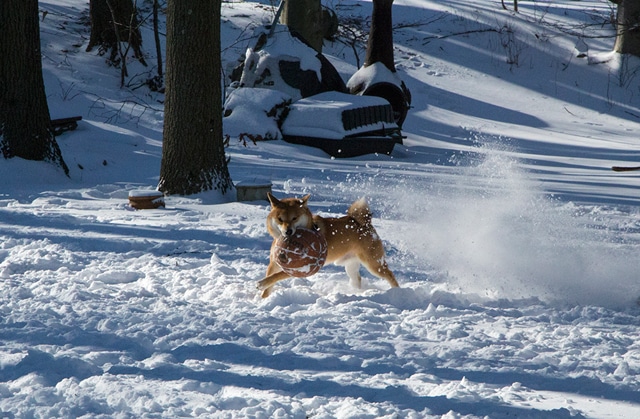
Photo by Luba Rasine-Ortoleva
Feel Nature in the Raw
Unlike much other data or information you might want in your narrative, weather is one thing you cannot simply research or vicariously live. Sure, you can watch a stormchaser video or your favorite weather channel, but if your work is going to express any climatic realism at all, you need to get out there and experience it.
Ever stood in the eye of a hurricane and watched the air turn green? Kayaked out on the open ocean only to have the benevolent heavens suddenly hurl hail at you? Watched horizontal lightning rip the skies open? Or sit on an Alpine peak watching the tops of clouds roll past you?
The next time you're caught by the weather, don't run for cover.* Stay put and feel. Feel it with your entire being.
I’m ridiculously, profoundly influenced by the weather around me, all the time. No matter what mood I’m in or the thoughts running through my mind, when I walk or drive through fog, my daily routine glazes over and I’m transported back to my homeland in Central Europe. Then there's Calle Luchana, the street of honey and gold that burned a permanent mark into my soul when I lived in Madrid. I've experienced other Calle Luchanas in other cities, but they're few: it has to be a certain wavelength of light and a certain gritty texture, a certain temperature and a certain humidity. It's not just any old afternoon on any old street. Then there's… just too much to expound upon here.
* Unless it really is a tornado.
Description of your protagonist's physical appearance? Check. Description of his/her car, house, garden, desk, other plot-relevant assets? Check. Description of background and other secondary scenery? Check. Characterization of the weather in your story? Uhmm…
Don't discount it. It might be the dullest possible way to start a conversation at a party, but weather can serve as a powerful element in your writing: it can be the atmospheric setting that gives a stretch of dialogue or an action scene that extra flavor; the catalyst for a plot point or conflict resolution; and yes, weather can even be the main character if you are so rained upon. Er, inclined .
Weather can also serve as simple inspiration, much like music whets your muse . I've written in all sorts of weather: in the sun, in the rain, foggy, clear, overcast, snow and storm.
Bottle up as many weather-related sensations as possible somewhere in your psyche for future creative use, especially those exceptional moments of nature's raw power. It's not every day you experience a hail storm, hurricane, or Arctic winds. As a self-respecting writer, you must be able to recall the bone-chilling details of a raging snowstorm while writing your next breakout novel in a hammock in the Caribbean. (Hopefully not the other way around.)
Write Despite the Weather
Take everything you just read in the previous section, and flip it. Let's say cloudy days really get you depressed. So uninspired are you that you drag yourself around all day, barely existing. Forget high creativity.
Or how about heat. Try having a coherent thought—nevermind well-structured writing—in ninety degrees at ninety-five percent humidity.
Never fear, the literary weatherman is here! Now, you too can be your own climate generator. Use that bottling technique I mentioned above and draw on your most powerful experiences with the elements no matter where or when you are. Like any other emotion, sentiment, or experience, make the atmospheric forces other humans take for granted an essential tool in your wordshop.
Of course, in certain instances you might need a little technological help… like a fan when the heat starts to melt your brain.
(Now, if you happen to be under the weather , like I was over the holidays, you really need to push through that “local” weather. I wrote about my little personal war on my web site.)
Finally, leverage the power of Nature to barrel through writer's block. It's amazing what a change of weather (e.g., light, temperature, humidity, pressure, etc.) can do for a word-weary writer's brain. Especially effective is contrast. For example, if you live in a sunny climate, you may find that those few cloudy days are actually incredibly romantic. Make the most of them! (Writing wise I mean!)
How does the weather change the way you write?
Take one of your WIPs and review it from the point of view of the weather. Could your story use a little more atmosphere, a little more force of nature? See what happens when you introduce the weather to your narrative. Or, if you feel more like spinning an entirely new tale, write a scene with the weather as the centerpiece. Let your creative brilliance rain into the comments box below by sharing your practice with the community!
Birgitte Rasine
Birgitte Rasine is an author, publisher, and entrepreneur. Her published works include Tsunami: Images of Resilience , The Visionary , The Serpent and the Jaguar , Verse in Arabic , and various short stories including the inspiring The Seventh Crane . She has just finished her first novel for young readers. She also runs LUCITA , a design and communications firm with her own publishing imprint, LUCITA Publishing. You can follow Birgitte on Twitter (@birgitte_rasine), Facebook , Google Plus or Pinterest . Definitely sign up for her entertaining eLetter "The Muse" ! Or you can just become blissfully lost in her online ocean , er, web site.

48 Comments
Excellent article and a topic I’ve been thinking about lately for my current WIP. I’m guilty of too much ideal weather and have just now made a note to spruce things up in my next draft. Thanks for the inspiring post!
Excellent. Spruce it up! And do share when you’re ready!
Hi Birgitte! Great post! Weather seems to add a new depth to a story. Here is part of a current WIP about a lost dog. (Great photo attached to your post!) He glanced into the woods before beginning the hike to his car. Trying to make the most of his shortened visit, he breathed in the scent of sequoia trees and damp earth and watched gold aspen leaves swirl in the breeze across his path. An ominous dark cloud had moved quickly from the Western sky and urged him to quicken his pace. An hour’s hike brought him to the clearing where his SUV was parked. Cold daggers of rain pierced the canopy of trees and slapped his face while he raised the rear door, threw in his backpack and jacket and huddled inside to finish a bag of peanuts. His brief rest was interrupted by a short, familiar bark. Mark’s eyes traced the sound. On one side of the path the troubled dog sat on fallen pine needles, ears pointed in high alert, the wind driving a path through its long fur, the chain gone from around its neck. For several moments they simply stared at each other……..
I liked the part about the wind in the dog’s fur. Your piece makes me realise it will be hard for me to write about weather without breaking the rules of one of my other current challenges: to excise adjectives from my writing. Weather cries out to be described! Watch this space to see my attempt… and thansk for sharing. -Sef
It’s actually really quite simple (sorry couldn’t help all those helping words! 😉 ). Weather, REAL weather that is, scoffs at adjectives. Adjectives are for little drizzles and summer breezes. Let’s have some good strong verbs in your stories. The weather moves, girates, ruptures and razes, spins you blind, paints the world a different color. Get it out there!
Hi Ruth, Thanks for sharing this scene. Like “cold daggers of rain pierced the canopy of trees” although you don’t need “of trees” — given the context, “canopy” is pretty clear. Also not sure a dagger would slap a person’s face. Maybe sting?
Also like “the wind driving a path through its long fur”. But, rather than saying “the chain gone from around its neck” how about “the marks of a chain still lingering around its neck”.
I’d tighten up this piece in this way. Also, always look for the excessive words, the words you don’t need or that are repeating information. For example, you don’t need to tell us that the man glanced into the woods BEFORE the hike to his car. It’s stronger if your opening line focuses on that single action of looking. Establish that tension between this lone guy and the woods. The gathering storm that’s starting to mix in with the intense flavors of the earth and the trees. Never mind he’s about to get back to his car. Of course he will. Make the moment pop from the start.
Thanks Birgitte! So many good ideas! I never thought of including weather to compliment a story. Thanks for taking the time for so many excellent responses.
Thank you for your post. I had not thought of weather is such a way before now.
The thunder rolled in the distance building until it spilled across the sky. It gave a final explosive shudder before it settled into temporary silence. The rain fell on the pavement, each drop making its own individual note that blended into a whole that was the symphony of the storm. The storm roared its defiance. It could not be denied.
Storms provide such drama! It’s difficult to find appropriate words for thunder but I like “explosive shudder” and “roared its defiance”. I can appreciate that weather is the perfect backdrop for story, from softly falling snow, to screaming wind to benevolent sunbeams.
Tracey, a few suggestions to rephrase for greater impact:
In the distance, thunder rolled, billowing its wrath across the sky. An explosive shudder, then suspicious silence. Rain broke it, droplets bursting against the pavement with individual notes that coalesced into a deafening orchestra.
Something like that. Play with the phrasing, tempo, sentence structure, imagery.
“It could not be denied” just repeats “The storm roared its defiance”, so no need for it.
Thank you. I appreciate the feedback.
John Grisham’s books always let you know the weather as the characters move around. It struck me the first time I read them and every time I go back. For someone in the distant European north, hearing about the American South’s humidity and high temperatures makes the writing rather exotic.And Garrison Keillor talks evocatively about winter, and especially mud, in his Lake Wobegon series.
Thanks for the reminder that readers live in all parts of the world and explicit weather conditions tell the story as much as dialogue! Thanks for your input!
“It was a dark and stormy night.”
A classic! I always loved that one.
Haha! Good one! I was wondering when someone would post this.
In my current novel, an endless autumn season plays a metaphoric role: It’s warm for late October. Mother Nature herself would appear to be discombobulated in the face of Kathlynn’s death sentence. Unseasonable weather, however pleasant it may be, instills a dread in people as if Biblical events are about to be unleashed upon them. But Conrad isn’t paying attention to the Weather Lady, isn’t watching television at all, no, he’s down at the Community Centre, on the treadmill, running, running as fast as he can, sweating, and dreading something else, something even more immediately pending than the specter of life without Kate. The revenue audit.
Somehow, this piece is a little too short for me to grasp it, to really get into it. And yet there’s enough to spike interest in further reading.
One sentence however, deflates the power of the story – the second one. “Mother Nature” is a cliché phrase I’d stay away from, “would appear to be” is too weak and uncertain, “discombobulated” is one of those awful bland and altogether excessively long words, and “in the face of ” doesn’t tell me what I want to know.
I’d suggest a much stronger, disturbing opening to this. A warm late October isn’t disturbing enough for what’s about to follow. Think on it… let me know what you come up with!
Excellent post, Birgitte, and a wonderful essay in your blog today concerning climate change. It’s nice to witness both common sense and articulate intelligence for a (no pun intended) change!
I’ve been reading a lot of James Lee Burke lately, and I’m really impressed by how he makes the surroundings, including the weather, become a very real character in his stories.
Johnny Vance stared upward, amazed by how the skies could become dark so quickly. The sleek one-man sailboat he’d named Victory still lurched forward, but the top of the mast seemed embedded in the blackness above, and he knew the wind could shift at any moment.
And then it stopped.
He was but a mile off the coast, but it might as well have been ten. The mainsail drooped into itself, and the boat seemed mired in the quicksand of the ocean, neither proceeding or falling back; it just sat. “Dead in the water,” he muttered. It was a phrase most sailors hated to even think about – it meant he was on his own, just like that. He needed to devise a way to secure his and his vessel’s safety, for the ocean could be a vindictive mistress and a deadly lover, he knew. As the first peals of thunder echoed off the rising waves, the bow suddenly crested a swell and hung suspended in empty air for a moment before crashing into the trough. The barometer bottomed out just as quickly, and Johnny felt the air thicken as it seemed to be vacuumed upward into the heavens, replaced by the pelting rain. This was going to be a rough one, he knew.
I really like this piece! The weather and the tide can take twist a fun, day-sailing experience into a nightmare! You wrote of it very well.
As a long-time sail-boat sailor, both catamarans and a 27′ Catalina, I have first-hand experience with being caught ‘in irons’ (as you put it, dead in the water.) and it can be a pretty hairy experience in ANY weather, especially in heavy seas.
Something similar to being in irons happened once when we had sailed our 18′ Hobie Cat outside the Gate toward the Farallon Islands and played for hours in the rough waters out there( referred to as the ‘potato patch’) then once the sun began to sink in the fog bank that hangs around out there, we decided to head back for the Berkeley Marina (where we’d launched from.) We were *with* the tide but didn’t anticipate being *against* the wind (classic case of back and fill) UGH!
I’ll never forget the sickening feeling of being pushed back to sea underneath the Golden Gate bridge as inky darkness fell. We ended up having to dock at the Presidio Yacht club and catch a ride across to Berkeley to pick up our van and boat trailer. An “adventure” for sure. One I hope never to repeat, but may try to use in a story at some point. Thanks for the great piece!
You’ve got me itching to get back on a sailboat Mer! I used to live on one, in Los Angeles. That was back in my screenwriting days… ah the life… so you’re in the Bay Area? So am I! Let me know if you’re down in the peninsula some time, would be great to have a coffee.
I’d love that, Birgitte! What part of the peninsula do you hail from? Funny how sailing gets into blood, isn’t it? We’ve had eleven boats through the years, but our favorites were always the sailboats.
Once a sailor, always a sailor…. 🙂 Email me and we’ll make it happen! info (at) birgitterasine.com
Nice. Nautical scenes are hard to do – so much happens all the time that the focus can be lost. This is nice though and you captured your character’s determination to beat his opponent. I agree that in some books the weather becomes a character in its own right, and a setting where this seems natural – the sea, or somewhere with a wide range of ever changing weather (hmmm, UK…) makes that choice a strong one. Thanks for sharing, -Sef
Thank you “Word Smith” — wish I knew your name to call you by but respect privacy. I just replied to Mer, above, on the topic of climate change… I appreciate that my newsletter resonated.
I love storms at sea, being an ocean kayaker and having been caught in quite some rough weather myself. The power of the sea is unmatched, and has inspired and terrified humanity since we learned to speak.
So about your story: I like this scene, but would recommend tightening the ropes in a few places. Your second sentence, for example, has three parts, connected by “but” and “and”. Somehow, it doesn’t flow. See if you can rephrase it, and chip away at unnecessary words like “seemed”. If you’re painting an image, don’t tiptoe around it. Just paint it. “the top of the mast stuck in the blackness above” or something like that. Also no need to say “he knew”, all you need is “the wind could shift at any moment,” as that implies Johnny is aware of it.
In the third paragraph you’ve got too much repetition — “..the boat was mired (get rid of “seemed”)”, “neither proceeding nor falling back”, “it just sat”, and “dead in the water” all say the same thing. Pick one, the best one, and it’ll be stronger.
Take out the instance of “he knew”.
Try to stay away from the passive voice in passages like this that you really want taut with tension. “seemed to be vacuumed”, “replaced by”, etc.
Thank you so much, Birgitte, for the critique. I will definitely work on these issues in my next piece. ~Bruce
Sounds great, Bruce. (But work on them in all your stories! 😉 )
Hi Brigitte, really good points about the weather (and climate change skeptics). My current WIP could probably be classified as being set in ‘weather’. It starts in a storm in the Southern ocean and moves to Antarctica (the heroine is a climate scientist). The hero is currently out on the ice, trapped in a storm. I’m lucky to have assistance from a great friend who is an Antarctic geologist, she’s been to the ice a few times so is keeping me real.
Lily, your story sounds great, good luck with it! Excellent also that you’re reaching out to your geologist friend, critical to do that kind of research for your stories. I’d love to read a synopsis whenever you have one ready.
The water had a film of ice, shaped right into the lip of the jug, before Dora cracked it with flinching knuckles and poured it into the basin.
Today it would be a relief to work in the Hygienic Steam Laundry. The boilers kept the room hot, even if the steam turned to wintry drops on the girls’ cheeks the moment they stepped outside to hang up the laundered sheets.
The bedclothes would turn stiff out there today, Dora thought. Great flat boards of linen, to be wrestled with in the yard, her shoes slipping on frozen mud, her own breath getting in the way of the work. The sun was no brighter than the burnished copper boilers and neither gave off the warmth Dora had missed ever since Quinton went away.
Sefton, not bad — but the full impact of your story is still just below the ice, as it were. The first sentence, especially the “shaped right into the lip of the jug” is a little confusing, makes me read it a few times to get the image. How about: “A film of ice rimmed the lip of the jug, gasping its last few frozen breaths at Dora as she cracked it and poured its captive water into the basin.”
This gives the water and the ice more character, as if there’s a struggle going on between the two before your character cracks the ice. No need really for “flinching knuckles”.
You can do the same thing in the second paragraph…. “The boilers managed to keep the room hot, but the steam they churned out snapped into wintry drops on the girls’ cheeks the moment they stepped outside to hang the laundered sheets.”
See how that injects drama and conflict into the action?
Thanks Birgitte. I could picture exactly the image I want – the weird shape of the piece of ice fit into the top of the jug, then Dora having to punch through before she pours it out – but found it hard to express. I take your point about using verbs to make the inanimate objects actors as well as the humans and create conflict.
This is one of those times when what I can see so clearly in my head doesn’t want to be pinpointed on the page….
Right, that’s the craft of the writer. Doesn’t always come easy. Don’t give up. Work on it. Talk a walk and think about it. Sleep on it. Use phrases and visuals you may not normally associate with ice, water, and jugs.
I enjoyed this post immensely, Birgitte. Climate change has had a polarizing effect in my marriage for several years now (rolling my eyes) but all that is a completely different conversation! Thanks for the reminder to incorporate weather into our writing. James Lee Burke (as someone else pointed out) is a master at this, each word of his descriptions do double-even triple-duty to make the weather, the light, the temperature as vivid as any human character. I feel transported to Louisiana, Montana, Texas, Mexico. Thanks for the great post!
Mer, so glad to hear it resonated. I know what you mean… climate change polarizes (no pun intended!!) like almost no other issue. In fact, I’ve had one person unsubscribe from my author’s newsletter because of it this morning!! (here’s what I wrote: http://www.birgitterasine.com/newsletters/muse-issue-seventeen-january-2014 )
I had an email exchange with the person to find out what exactly about it caused them to unsubscribe; clearly it pushed a lot of buttons. It’s unfortunate because this isn’t a political issue, and shouldn’t be a reason to stop communicating (or receiving newsletters). It’s a little too easy to leave the room, as it were, or resort to insults when you encounter a challenging viewpoint.
Thanks for your thoughts and mentioning James Burke — any particular work of his you’d recommend?
He’s quite prolific! His early books were literary fiction, then he began a successful career as a genre writer with three series:Dave Robicheaux, Hackberry Holland, and Billy Bob Holland. I guess I should point out that I’m not much of a genre reader (or writer) but his writing is something very special. I have several favorites, but I think a recent one, Creole Belle, is especially good, in my opinion, though he was criticized for POV violations! =)
(The first line: ““For the rest of the world, the season was still fall, marked by cool nights and the gold-green remnants of summer. For me, down in South Louisiana, in the Garden District of New Orleans, the wetlands that lay far beyond my hospital window had turned to winter…”) illustrates his ability to always brings weather, season, and light into his stories.)
An interesting side note about his writing career: He began writing quite early (in college) and published 3-4 books right away. Then suddenly, he couldn’t publish anything. For thirteen years. One book, The Last Get Back Boogie, was submitted 111 times over a nine year period. (It still holds the NY publishing industry record for rejections!) Then, upon publication by Louisiana State University press, was nominated for a Pulitzer Prize, so go figure.
He may be an acquired taste for some, but he’s maintains his spot in my top ten favorites against stiff competition.
Thank you for the great writing post. I’m a newbie here; I’m not really sure if I did okay but here goes!
(This is just a fragment of my story)
I stood there, in the middle of the street, people going and coming, to and fro, walking and running and stopping and bicycling away and back, in perpetual motion even at pause. I reached my arms to the sky, the rain mercifully soaking my hair my face, my shirt, my hands, my shoulders, my eyebrows, my heart. The sky was swirling with different kinds of clouds, some light and wispy, others dark, heavy, threatening to burst like a water balloon. Flowers of black umbrellas twirled, all while I stood there, holding my hands up to the sky, begging for more water in a sea of rain. I must look like a mad man, I thought. I snorted, a thin, white stream of breath coming out of my nostrils. Of course. I was a mad man.
My fingers started tingling with the cold, but I didn’t stop stopping. No one stopped me from stopping, anyways; they were too busy coming and going to wherever they were coming and going to see a man standing still in the middle of the rain.
What a spectacular city this is, not one person caring that a shabby-looking man is holding up his hands like Moses and willingly getting drenched, while an ocean of umbrellas desperately tries to avoid all water.
Welcome! Nice to have you in our community.
I find this figment you’ve shared here poetic, fluid. It does need some massaging to make it into a work of art. Words are like paintbrushes: the stroke, the pressure, the color, the texture and thickness, all are qualities you can play with to create the image or emotion you seek.
See what happens when you take away some of the “crutch” words, repetitive words, and unnecessary punctuation: “I stood in the middle of the street, people coming and going, walking and running and skipping along with their children stopping to talk stopping to turn back or move out of another’s way, cycling in and out of their own standing obstacles weaving unsteady painting invisible paths on a pavement wiped smooth by the rain”
I took a few liberties here but see how that feels, play with it, give it more character, more life, don’t be afraid to get into the “people’s” heads and make the rain and the pavement more alive.
Then inject your protagonist into this rich soup of activity. But don’t say “the sky was swirling with different kinds of clouds.” Just take me immediately to the clouds, it’s obvious they’re different b/c you’re already describing them. Maybe whip up a mirror image of the heavens to what you just described below, on the street; “The sky swirled a million colors a million shades clouds heavy and dark light and airy moving circling and tumbling bubbling vaporous and streaking clear across, some stopping to puff smaller ones out of their way…”
One more thing. No matter who your protagonist is, give him/her dignity. Don’t have them “snort” unless there’s a very good and solid reason. That word instantly pulled me out of your story, and I was done. Broke the spell.
Also, since you’re new to the site, feel free to read through the others’ WIP posted here as well as my comments, since they tend to apply universally regardless of the story.
As I post this practice, I realize that I have only ONE line of dialogue! How’d I manage that?? But if I begin tinkering with it, it won’t be a practice, it will morph, right?
*** When Donnie’s friends asked her why she didn’t hunt/fish/sky-dive/mountain climb/”do” dirt bikes/snow-ski/scuba dive, Emily would look up from folding lawn-chair she sat in, placing a finger to mark her place in the inevitable book she was reading or notebook she was writing in, and smilingly point to her custom-printed tee-shirt: Professional Spectator. It worked for them: Donnie was a sporto– she watched. There had only ever been one exception to this arrangement.
Years before, sailing had been something that she enjoyed and enthusiastically participated in. Who’da thunk? She didn’t swim and knew nothing about the mechanics of it, but she loved the sea and that love had bolstered her determination to learn.
Emily enjoyed learning about tides and how to read the wind on the water, how to set the sails. She loved to play with high winds by sheeting in the sail tightly for maximum speed, leaning outward in the trapeze harness, the delicate balance of a catamaran flying across the water on one pontoon–there was nothing like it! Surely a cross between surfing and flying, she thought.
Donnie made sure they sailed with other Hobie people, and usually within the soothing crescent of Monterey Bay or the protection of San Francisco Bay, so Emily’s initial nervousness eventually disappeared and she gave herself completely over to the exhilarating sensations and stopped worrying. Donnie had never flipped the boat when she was crewing for him, though others in their fleet had done so.
Sometimes, just outside the Gate in San Francisco Bay, the water was so rough the swells as tall as their mast and inside the green water she glimpsed seaweed, fish, once even an octopus. The butterfly-wing colored sails of the other boats would disappear when they were in the troughs, then reappear as they scooted up and over top. It was easy to forget that winds and tides didn’t always consult on optimum safety conditions for sailors.
One golden late afternoon in October, everyone in their group beached their Cats and were peeling off their wet-suits, starting the process of unrigging their boats, having a beer, telling tales–when Donnie did a nose-count. John and Andrea Clevinger’s boat had not returned.
Anxiety rippled through their group like wind on the water’s surface, camaraderie being replaced with fear and worry. Several scanned the waters with binoculars, but the Clevinger’s distinctive Tequila Sunrise sails were nowhere to be seen. Donnie wasted no time in calling the Coast Guard. The sun slipped under the horizon, and from the beach, they could see the search lights of two vessels and a helicopter traversing the rough sea outside the Gate, another vessel searching the water inside the Bay. Hours went by and the fog turned into a chilled drizzle–some of them put their wetsuits back on for warmth, but nobody went home. Two junior officers had joined their group, asking questions: when and where were the couple last seen by members of their group? Outside the Gate? Inside the Bay? Had anyone noticed their boat tip over?
At that last question, Emily saw Donnie’s eyes flash. “Do you really think we’d have left them out there if we’d seen them go over?” he asked, voice flat with anger.
It was well after midnight, and some of them, mostly the ones with children, had been forced to go home. The Coast Guard made the decision to halt the search until daylight. Donnie refused to leave, he and Emily sleeping rough in the old van. One or two others stayed as well, sleeping in their cars. Emily tried not to think about the water temperature out there, but she couldn’t help it. It was never much more than 50° or so. The wetsuits would give them a few hours extra advantage, but could not prevent hypothermia.
The next morning, it didn’t take long for helicopter to spot the white pontoons of the turtled-Catamaran. The Clevinger’s Hobie was inside the Gate, but mast down in the water, the rough sea, fog and drizzle had made them impossible to spot at night. They found Andrea tied to the trampoline, dead from exposure and severe hypothermia. They never found John.
After that, Emily found that sailing’s shine dulled for her, the thrill had disappeared. She finally told Donnie that he would need to find someone else to crew for him, but it wasn’t long before he sold their Hobie Cat. His heart wasn’t in it anymore either. Donnie went on to other things, other hobbies and sports, but Emily didn’t. Now she wore her tee-shirt and watched.
Mer sorry for the delay in my comment on this, somehow I missed it. Strong scene here, enjoyed it. The one piece that rips me out of it is “Who’da thunk?”. Doesn’t match the voice of the piece.
You might want to play a little bit with the phrasing to avoid monotony. Sometimes, repetition creates symmetry but it can also create flatness. Most of your sentences start off with the main noun or an orienting phrase (where or when). Break it up. There are many ways to start a sentence. Keep in mind that just as in the overall narrative, the beginning and the end are powerful elements. The same goes for an individual sentence.
Hope this helps!
Thanks for the critique, Birgitte. I almost deleted this practice because it was so badly done. (Written at work, a few moments at a time between numerous interruptions.) I’m an admin asst to the Admissions department at a private, not-for-profit college and multi-task all the time, but should’ve known better than to do so while trying to “practice” writing! I’ll definitely keep your advice in mind. 🙂
Oh good heavens, if you wrote this while doing something else, all editing gloves are off. And hat off to you for trying!
Derek sat in his attic study, frigid fingers clutching a blanket that covered his layers of winter clothes. At his feet a little gas fire hissed bravely. “Fat lot of use you are,” he muttered as he stared at its puny little flame. He wriggled himself tighter into his cocoon. It was midwinter. Outside, and inside. Looking at the wall mirror opposite he thought his face was turning darker. He fisted it a few times to keep the frostbite away. Why did I ever decide to move to this part of the world, he sighed, as his breath misted past his face. Suddenly a rent appeared in the grey shroud that hung just a few feet above the roof. A shaft of sunlight poured into the dingy room. Everything suddenly lit up, and took on colour – the brown ducks flew in formation on the wallpaper, the matte black of his laptop pulsed with warmth. He looked up at the transluscent blue patch of open sky. . Leaping up he Instinctively threw off the layers that had isolated him. He breathed deeply, two or three times, before sinking back onto his chair. His fingers flew over the keys. It wasn’t the cold that had induced writers block. It was the lack of light. Coming from a warm climate he’d always taken the sun for granted. He sat back for a minute, and opened his face to the golden orb that spun and pulsed in the little lake of blue. . .
Thank you for the post. I am new here and I would love to improve my writing. Here is a bit of a scene set in a world I am working on. Any advice is greatly appreciated.
She stared at the dust, avoiding the piercing gaze of the afternoon sun. Heat crawled up her skin in sickening waves and she wished the clamminess beneath her robes a slow and painful death.
Lethargy slowed her movements, but she forced onward. The bucket she carried toward her family’s goats sloshed uneasily, threatening to spill its wealth on the desert floor.
Hi there and welcome! This sounds like fantasy or sci-fi, since you mention ” a world” you’re working on, is that right? Without more context or background it’s not easy to give the proper feedback, but given what you’ve shared, I’d say:
– if this is another world, how do you define “afternoon” here? Does heat here feel different than on Earth?
– i think you’re defining the tension between the character and the heat well, keep going in that vein. But rather than “wealth”, you might think about another word that would evoke the emotional significance of what I assume is water on this world — or is it perhaps another liquid that the people here need?
WOW – my husband will love you. He enjoys driving in blizzards, sitting outside while lightning comes perilously close to striking him and getting pelted by hails.
I urge him to drive me one block during mild rains in the winter because of my morbid fear of hydroplaning and/or sleety rains 😉
Guess I am in deep trouble, eh?
BRILLIANT post – out of curiosity, how long did it take for you to piece words together into a fun, flavorful and fabulous post *jealous* 😉 hehe
Much love Kitto
Hi today, Saturday, June 22, 2024, the weather is a reminder that nature’s power can be both beautiful and intimidating. As I step outside, I’m grateful for the opportunity to experience the elements in all their glory. Whether it’s the warmth of the sun or the coolness of the breeze, the weather has a way of inspiring us to tap into our creativity and find new ways to express ourselves. So, let’s take a moment to appreciate the weather and let it fuel our imagination!”
Submit a Comment Cancel reply
Your email address will not be published. Required fields are marked *
Submit Comment
Join over 450,000 readers who are saying YES to practice. You’ll also get a free copy of our eBook 14 Prompts :
Popular Resources
Best Resources for Writers Book Writing Tips & Guides Creativity & Inspiration Tips Writing Prompts Grammar & Vocab Resources Best Book Writing Software ProWritingAid Review Writing Teacher Resources Publisher Rocket Review Scrivener Review Gifts for Writers
Books By Our Writers
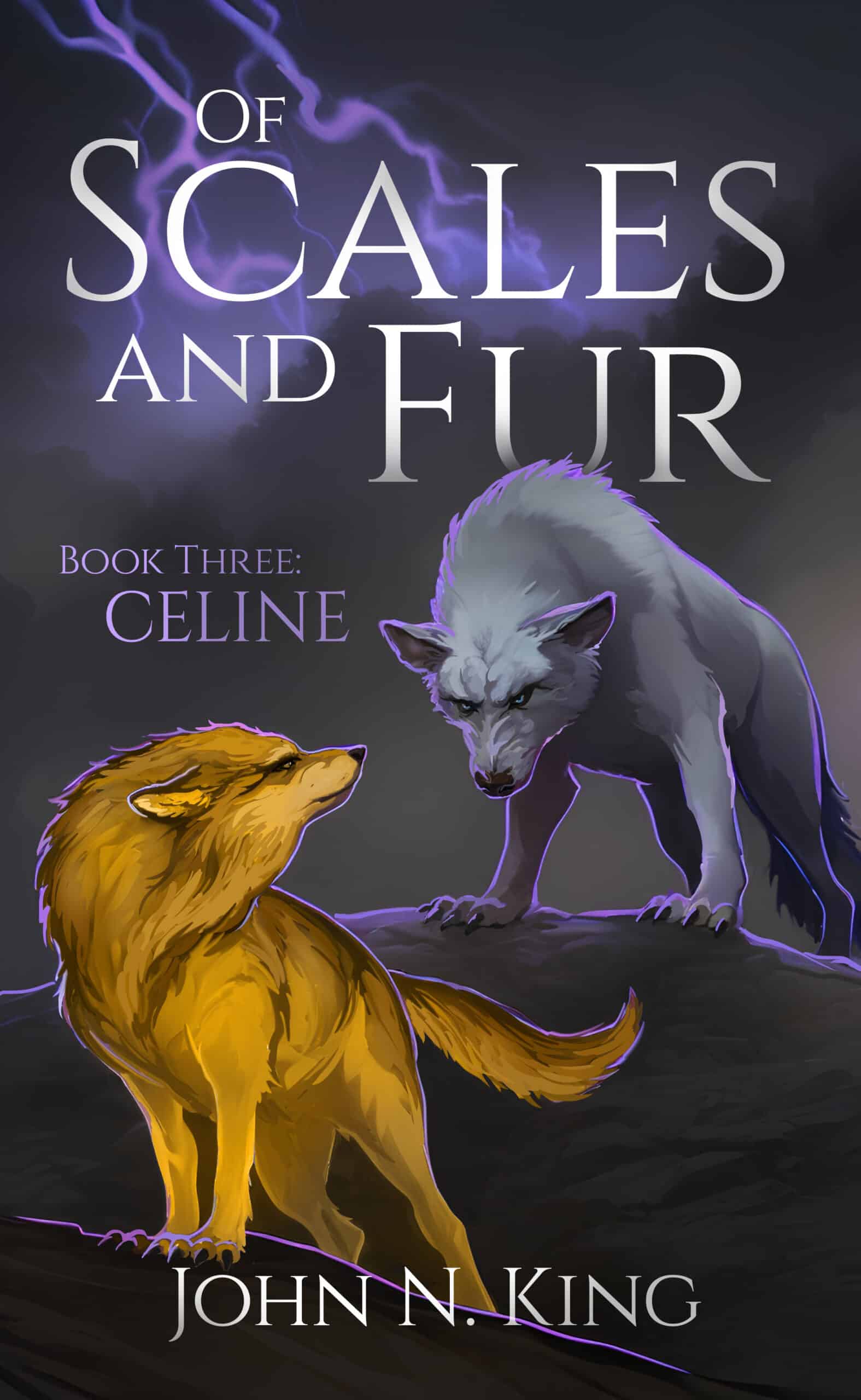
You've got it! Just us where to send your guide.
Enter your email to get our free 10-step guide to becoming a writer.
You've got it! Just us where to send your book.
Enter your first name and email to get our free book, 14 Prompts.
Want to Get Published?
Enter your email to get our free interactive checklist to writing and publishing a book.

Rita E. Gould: An Artful Sequence of Words
Writer. Editor. Reader.

Weather in Writing: a Dynamic Literary Device
Although weather may properly be considered part of the setting, both its ubiquitous effects and changeable nature allows it to extend into plot, characterization and more.

Of late, I’ve been thinking about weather. Being informed about the weather is useful for selecting appropriate outerwear and activities. It even provides us with something to discuss about when we greet people. But when weather appears in fiction (either as exposition or dialogue), it exists to accomplish certain narrative goals. Although weather may properly be considered part of the setting, both its ubiquitous effects and changeable nature allows it to influence plot, characterization and more. In the following, I discuss several selections that demonstrates weather’s versatility in fiction.
Plotting Weather
Weather’s pervasiveness and its effect on human lives, of course, is the primary reason it makes an excellent plot device. Stories featuring weather-related catastrophes (from seafaring disasters such as Carol Birch’s Jamrach’s Menagerie to cli-fi dystopias such as Margaret Atwood’s Oryx and Crake ) are indebted to the weather for creating their central conflict: survival. These stories frequently rely upon but don’t require epic storms to create a crisis. In Jack London’s short story “To Build a Fire”, harsh winter conditions are normal in the Yukon. The protagonist hikes only with his dog despite warnings to travel in company when it’s dangerously cold. Several mistakes on this frigid day turn this walk into a struggle for life. However, snowfall plays a starring role in creating a very different survival situation in “Three Blind Mice” by Agatha Christie. [†] As forecast by the wireless news, the inhabitants of Monkshood Manor are trapped indoors by a blizzard. Well prepared for the storm, their real difficulty is that one of them is a murderer. However, weather, severe or otherwise, needn’t be life threatening to be a plot point. Although alarming, a tornado’s brief appearance in All the Living by C. E. Morgan merely threatens protagonists Aloma and Orren, reminding them that they need some contact with the world beyond their farm. [‡]

Symbolic and Moody Weather
In her article about the role weather plays in literature, Kathryn Schultz discusses how weather went from “mythical to metaphorical”, “with atmospheric conditions…stand[ing] in for the human condition”. [§] Schultz observes that such representations may to refer to individuals, relationships, or societies. Mary Tyrone, a woman suffering from morphine addiction in Eugene O’Neill’s play Long Day’s Journey into Night , declares that she loves the fog because of its ability to conceal the world. Fog, of course, represents the addicted state into which Mary escapes from unpleasant realities such as her son’s illness. The presence of snow in Richard Wright’s novel Native Son , however, works at the societal level. Through much of the novel, Bigger Thomas is surrounded snow, a subtle allusion to how his existence as a black man is circumscribed and controlled by white society.

Symbolic or not, weather in fictional works help authors set the mood. How a writer characterizes the weather in a fictional account will dictate the reader’s emotional response. In the opening lines of “The Story-Teller”, we’re told it’s a “hot afternoon” and that “the railway carriage was correspondingly sultry” (129). [**] Already, readers feel the wearying, perhaps irritable quality of this journey even before we learn that the “unsympathetic” bachelor will share an hour’s train ride with three boisterous children and their aunt, a woman who is ill adept at entertaining her charges (129). Similarly, the fog symbolizing Mary’s addiction in Long Day’s Journey also establishes an atmosphere of tension early in the play. Mary remarks that that the foghorn’s warnings kept her awake and unsettled her nerves. Yet, her family (particularly son Jamie) are all too aware that such restlessness is a symptom of her drug use and check for signs of addiction, something which makes her self-conscious and more nervous.
Foreshadowing Forecasts [††]
Scrying the skies for portents of poor weather to modern weather forecasts are among the numerous ways humanity has attempted to tell the future of weather. Yet weather, often working in conjunction with mood, can hint at events to come in fiction. In The Great Gatsby , [‡‡] the warm breeze fills Nick with “the familiar conviction that life was beginning over again with the summer” (8). Nick’s reflection suggests renewal is in the offing: Nick will reacquaint himself with Daisy and Tom just as Gatsby will restart his love affair with Daisy. In a different vein, Zora Neale Hurston presages a devastating hurricane in Their Eyes Were Watching God with several events, among them an animal exodus and the uncanny stillness of the wind. Many, Janie and Tea Cake among them, choose to remain because they think the storm will not be severe. Before he leaves, ‘Lias attempts to persuade the couple to accompany him by stating “dis muck is too low and dat big lake is liable tuh bust” (148). [§§] As predicted, the lake floods, forcing everyone remaining to flee to high ground.

Characteristic Weather
Using meteorological metaphors, as discussed in Schultz’s article, provides information about characters, ranging from physical characteristics to personality traits (replying icily, for example, uses weather to indicate displeasure). Conversations about weather also can reveal information about characters. In Robert Frost’s narrative poem, “Home Burial”, [†††] clashing notions of appropriate grieving coupled with an offhand remark about weather precipitate a rupture. The husband’s clumsy attempts to speak of their dead child infuriates his wife, particularly when he suggests she overly grieves. Infuriated, Amy accuses him of lacking feeling, given how casually (to her mind) he dug the child’s grave (ln71–78) and discussed his “every day concerns” (ln 86):
‘Three foggy mornings and one rainy morning
Will rot the best birch fence a man can build.’
Think of it, talk like that at such a time!
What had how long it takes a birch to rot
To do with what was in the darkened parlor?
You couldn’t care….(ln 92–7)
One can almost hear the door slam at the poem’s close.
Drawing from Weather
Weather’s profound effect on humanity is evident when we examine literary works. Beyond its humble role in the setting, it pervades mood, portrays us, and even “plots” against us, just as it does in real life. Utilized wisely, fictional weather helps underscore the thrust of a writer’s story, adding depth and complexity. And that makes weather a dynamic literary device.
What is your favorite example of literary weather? Share it in the comment section below.
[*] Updated 22 May 2018.
[†] This short story was based on the radio broadcast of the same name. Ultimately, Christie transformed the radio play into the famous West End play, The Mousetrap . Familiarity with either play or story will work for this example.
[‡] They add a television to their home, a sensible decision given that Kentucky is tornado prone ( 925 tornadoes were observed between 1950 to 2015 .
[§] Pathetic fallacy, that is attributing human emotion to inanimate objects in nature, often wears the guise of weather in literature.
[**] Saki. The Best of Saki. London: Penguin Popular Classics, 1994.
[††] I could argue that the hardworking fog in Long Day’s Journey (or at least the foghorn) also foreshadows Mary’s relapse. But, I thought I’d reward this example with the rest of the day off, since it’d already done so much.
[‡‡] Fitzgerald, F. Scott. The Great Gatsby. Cambridge: Cambridge U Press, 1991.
[§§] Hurston, Zora Neale. Their Eyes Were Watching God. New York: Harper & Row, 1990.
[†††] Frost, Robert. Robert Frost: Poetry and Prose . New York: Henry Holt, 1984.
Share this:
Author: Rita E. Gould
Writer. Reader. Editor. View all posts by Rita E. Gould
One thought on “Weather in Writing: a Dynamic Literary Device”
I was very happy to seek out this net-site.I wished to thanks for your time for this wonderful read!! I definitely enjoying every little bit of it and I’ve you bookmarked to check out new stuff you weblog post.
Like Liked by 1 person
Leave a comment Cancel reply

- Already have a WordPress.com account? Log in now.
- Subscribe Subscribed
- Copy shortlink
- Report this content
- View post in Reader
- Manage subscriptions
- Collapse this bar
- International
- Education Jobs
- Schools directory
- Resources Education Jobs Schools directory News Search

IGCSE English Language: Write a story with the title, ‘The Call’. Creative Writing Sample Answer
Subject: English
Age range: 14-16
Resource type: Other
Last updated
24 October 2024
- Share through email
- Share through twitter
- Share through linkedin
- Share through facebook
- Share through pinterest

This creative writing sample, titled “The Call,” takes readers into the high-pressure world of paramedics responding to an emergency call. Through vivid descriptions and engaging narrative, it captures the urgency and emotion experienced during a life-or-death situation. The story follows Jamie, a dedicated paramedic, as he and his partner, Mia, race against time to save a man in cardiac arrest.
In this GCSE/IGCSE English Language sample answer, several language techniques are employed, including:
- Imagery : The use of descriptive language paints a vivid picture of the setting and emotions, allowing readers to visualize the scene and feel the tension.
- Dialogue : Realistic conversations between characters add authenticity and showcase the urgency of the situation.
- Foreshadowing : Subtle hints at the challenges Jamie faces create suspense and keep readers engaged.
- Pacing : The story’s rhythm, with short sentences during moments of tension, heightens the urgency and draws readers in.
This digital file is essential for exam preparation as it provides a clear example of effective storytelling techniques, helping students understand how to craft their narratives. By analysing this sample, students can learn how to incorporate descriptive language, create engaging dialogue and develop compelling characters in their own writing. Investing in this resource will not only enhance your writing skills but also boost your confidence for the IGCSE English Language exams. Don’t miss out on the opportunity to elevate your storytelling abilities and excel in your assessments!
Click the download button to have the full file at your fingertips!
CONTAINS: 9 PAGES
Thanks a million for visiting Sweet Success Supplies! May your endeavors be as sweet as our deals!
Tes paid licence How can I reuse this?
Your rating is required to reflect your happiness.
It's good to leave some feedback.
Something went wrong, please try again later.
This resource hasn't been reviewed yet
To ensure quality for our reviews, only customers who have purchased this resource can review it
Report this resource to let us know if it violates our terms and conditions. Our customer service team will review your report and will be in touch.
Not quite what you were looking for? Search by keyword to find the right resource:

Today's Weather - Kukmor, RUS
- Windchill 34ºF Daily Rain --
- Dewpoint 36ºF Monthly Rain --
- Humidity 84% Avg. Wind WNW 7mph
- Pressure -- Wind Gust --
- Sunrise 6:29 AM Moon Waning Crescent
- Sunset 4:09 PM UV Index 1 (Low)
- Featured Videos
- Air Quality
- Top Stories More News
- Today's National Outlook
- Hurricane Tracker
- Allergy Forecast
- Cold & Flu
- Snow & Ski Forecast
- Fire Updates
- Traffic Cameras
- Weather Cameras
- Outdoor Sports Guide

IMAGES
VIDEO
COMMENTS
Describing humidity helps convey the sensory experience of the environment. Example 1: The humid air clung to her skin, making every movement a chore. Example 2: Dry heat sucked the moisture from his mouth, leaving him parched. Example 3: The tropical humidity was oppressive, wrapping around him like a blanket.
This one's 160+ Ways to Describe Weather. A note: These are for inspiration only. They can't be copied because they've been pulled directly from an author's copyrighted manuscript (intellectual property is immediately copyrighted when published). Evening. Evening shadows deepened into blue and purple.
"How to describe weather" seemed like a good place to start. This way, you won't get stuck trying to figure out how to describe nice weather, or thinking up ways to describe rain. Hopefully, this will make your writing go faster. I always include simple as well as more creative ways to describe or write about weather.
Words Describing Cold Weather. bleak - very cold and grey. biting - so cold that it makes you feel uncomfortable. brisk - fairly cold and a fairly strong wind is blowing. crisp - cold and dry. fresh - fairly cold and the wind is blowing. frosty - cold enough to produce frost. hard - a very cold winter. harsh - extremely cold and ...
Q: Can you provide examples of weather writing prompts? A: Certainly! Here are a few examples of weather writing prompts: 1. Write a story that takes place during a torrential rainstorm. 2. Describe the setting of a coastal town during a foggy morning. 3. Write a poem inspired by the tranquility of a gentle snowfall. 4.
Onomatopoeic verbs and words are perfect for describing the weather because they make a sound.. Here are a few examples to illustrate sound words. The pitter-patter of raindrops.. Thunder rumbled overhead.. Light hail pinged on the window pane.. With each step, the fresh snow crunched underfoot.. A bolt of lightning cracked across the night sky.. A cold north wind hissed through the trees.
Vivid Verbs. Because bad weather can often get out of control, describing a storm is not the time to skimp on verb usage. Weak verbs, such as "was" or "were," drain your descriptions of energy rather than infuse them with detail. Using specific, active verbs for the storm's motion gives readers a more detailed image of the story's events.
26 Metaphors for Weather. The Sky's Tears - Describing rain as "the sky's tears" conveys a sense of sadness or melancholy. A Blanket of Snow - Snowfall can be compared to a cozy blanket covering the ground. The Roar of Thunder - Thunderstorms are nature's orchestra, with thunder as its powerful percussion. The Whispering Wind ...
As such, weather is an excellent tool for symbolizing emotion, and more. William Shakespeare's King Lear, for example, is one of the earliest examples of weather in fiction. When Lear wanders out into the wilds, a storm rolls in. The storm helps create a mood, yes. But it also goes deeper than that.
Weather is a tool to evoke mood, guiding the character toward the emotions we want them to feel, and by extension, the reader as well. By tuning into specific weather conditions, a character may feel safe, or off balance. Weather can work for or against the character, creating conflict, tension, and be used to foreshadow, hinting that something ...
Writing Techniques. Estimated reading time: 5 minutes. Weather description is one of the easiest ways for young writers (6 to 8 years old) to begin their compositions. This is also usually the first story starter that they are being taught in school. For children who are weak in the language, writing a good weather description can be an easy ...
Here, using the cliché is needed to show how desperate the character is to start a conversation. 2. Weather As A Backdrop. The most common use of the weather in fiction is as an inconspicuous element of the setting in sentences like this one: Example: On a sunny day, Jane went to the public library.
How to Describe Being Cold (3 Full Examples) Here are three full examples of how to describe being cold in writing: Example 1: The air was icy, a frigid gust that cut through his clothes like a knife. He could see his breath misting in the cold, each exhale a puff of frost in the wintry air.
Weather can also serve as simple inspiration, much like music whets your muse. I've written in all sorts of weather: in the sun, in the rain, foggy, clear, overcast, snow and storm. Bottle up as many weather-related sensations as possible somewhere in your psyche for future creative use, especially those exceptional moments of nature's raw power.
A foggy night, such as might be seen in Long Day's Journey into Night. Symbolic or not, weather in fictional works help authors set the mood. How a writer characterizes the weather in a fictional account will dictate the reader's emotional response. In the opening lines of "The Story-Teller", we're told it's a "hot afternoon ...
This creative writing sample, titled "The Call," takes readers into the high-pressure world of paramedics responding to an emergency call. Through vivid descriptions and engaging narrative, it captures the urgency and emotion experienced during a life-or-death situation. The story follows Jamie, a dedicated paramedic, as he and his partner ...
Be prepared with the most accurate 10-day forecast for Kazan, Tatarstan, Russia with highs, lows, chance of precipitation from The Weather Channel and Weather.com
Weather.com brings you the most accurate monthly weather forecast for Kazan, Tatarstan, Russia with average/record and high/low temperatures, precipitation and more.
Weather.com brings you the most accurate monthly weather forecast for Kazan, Tatarstan, Russia with average/record and high/low temperatures, precipitation and more.
For more than 20 years Earth Networks has operated the world's largest and most comprehensive weather observation, lightning detection, and climate networks. We are now leveraging our big data smarts to deliver on the promise of IoT.